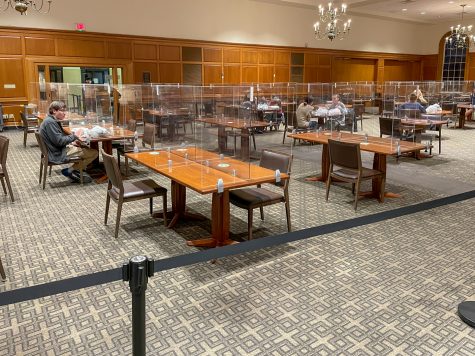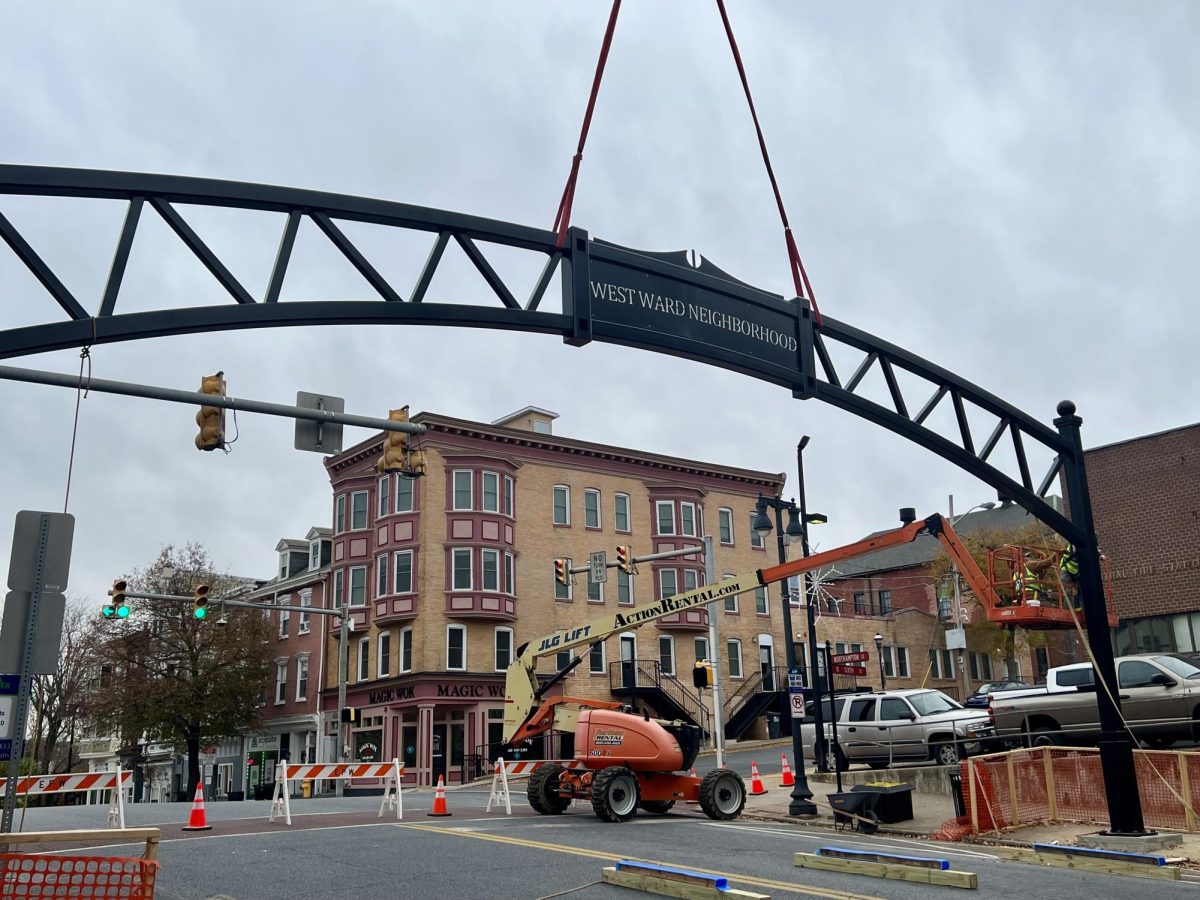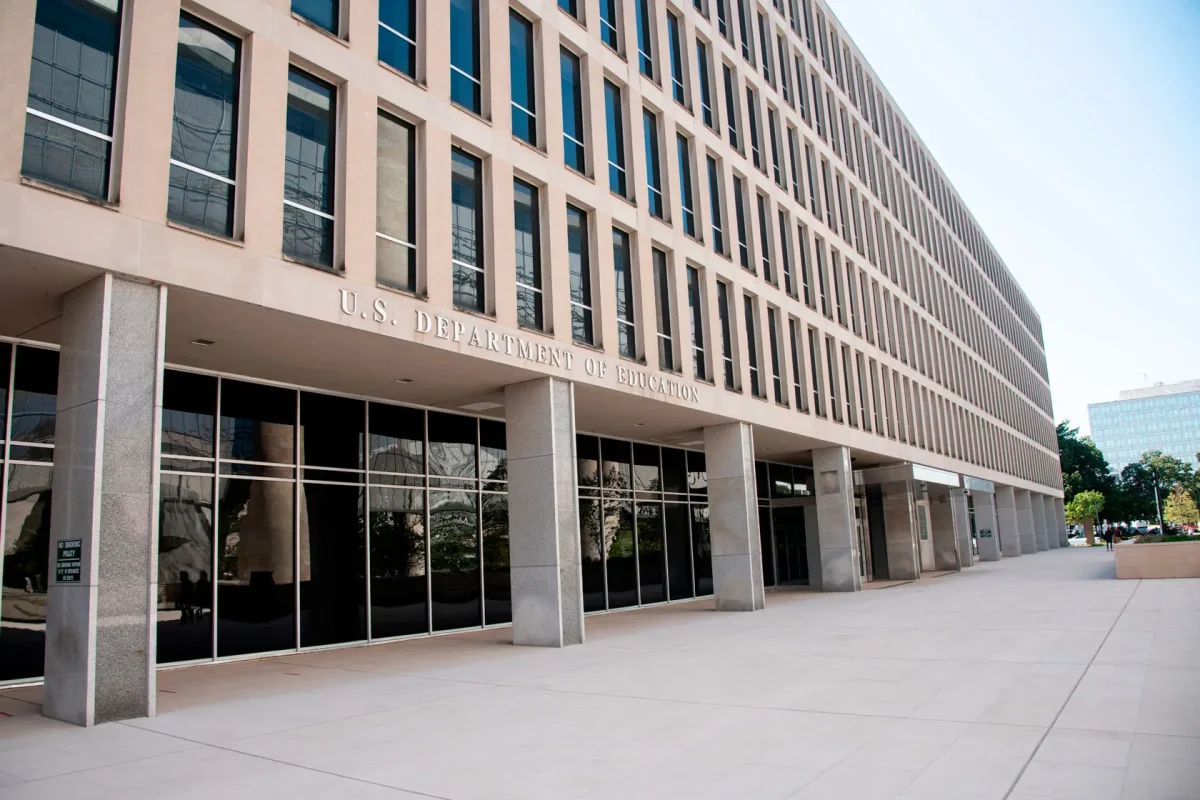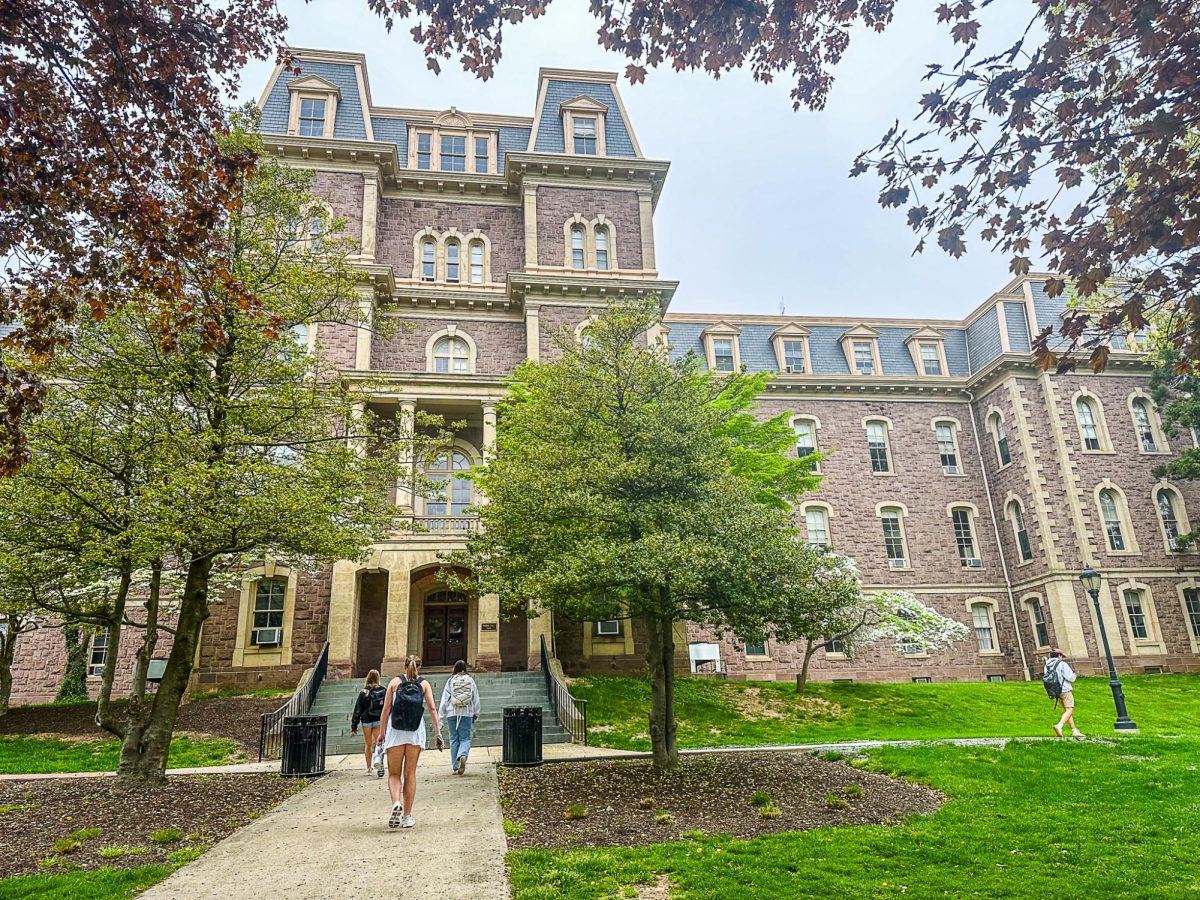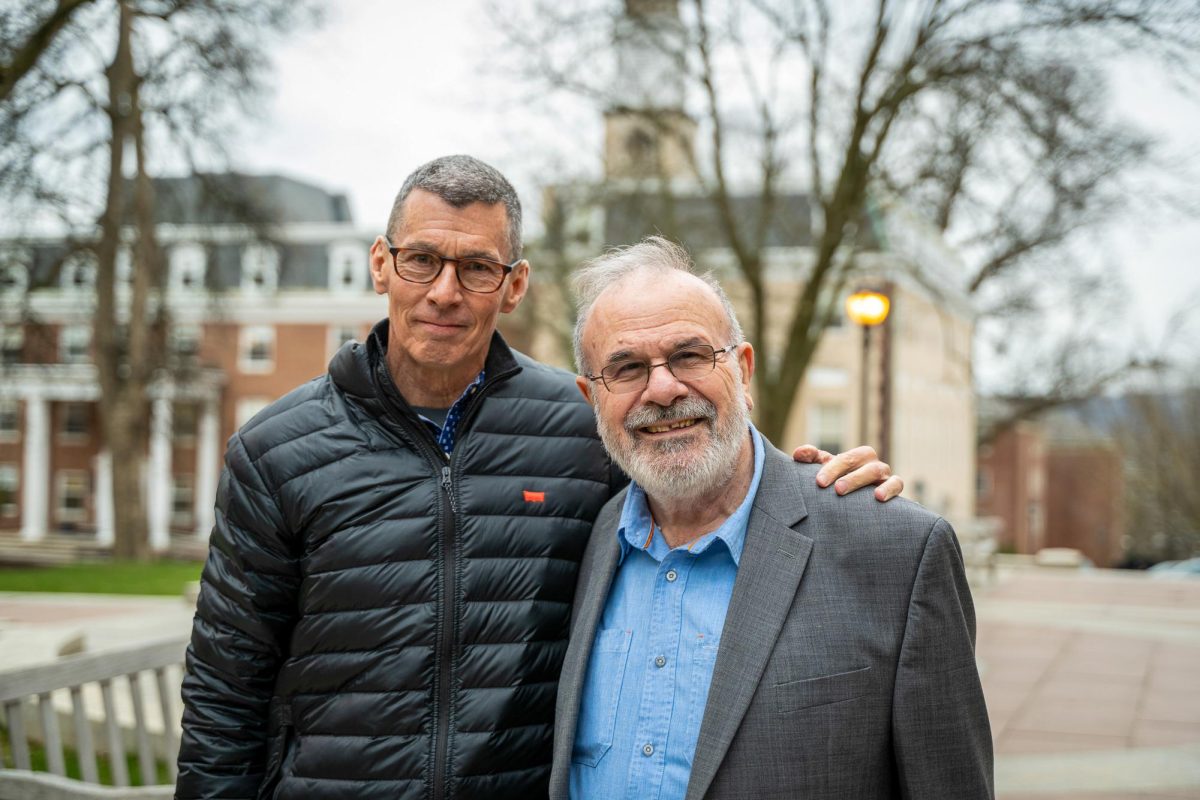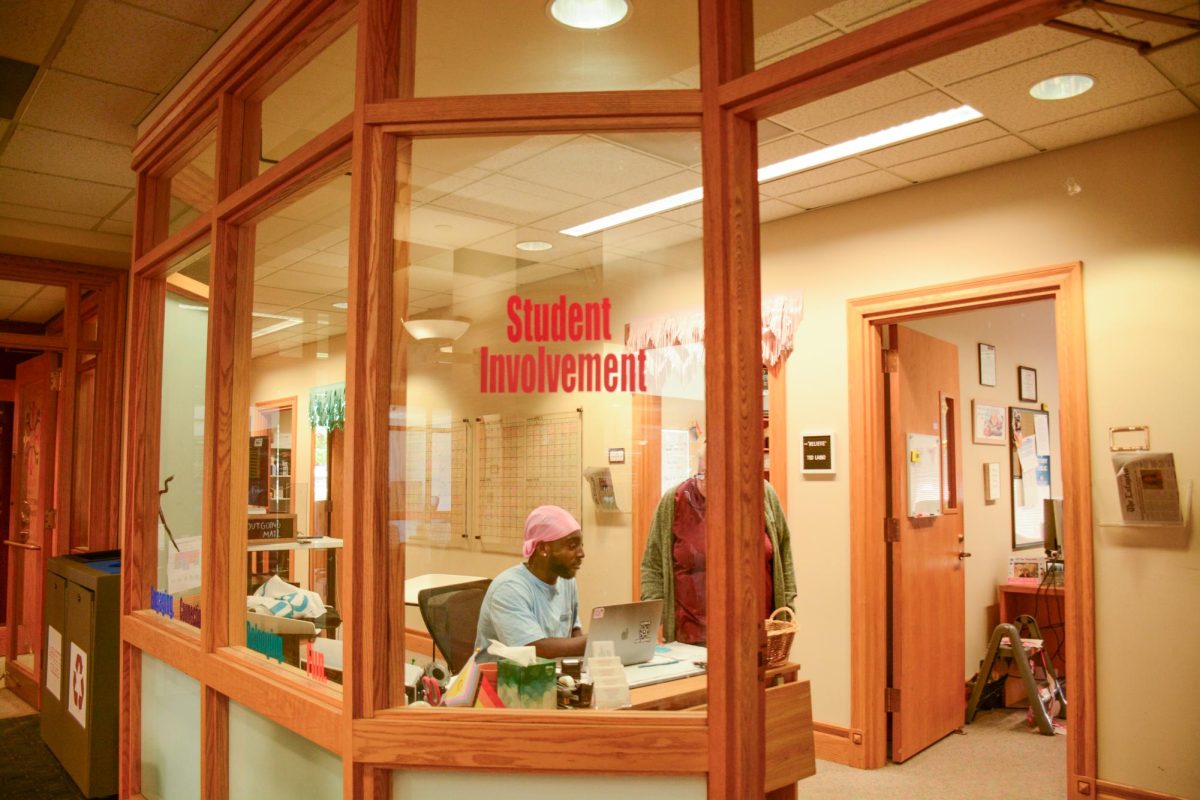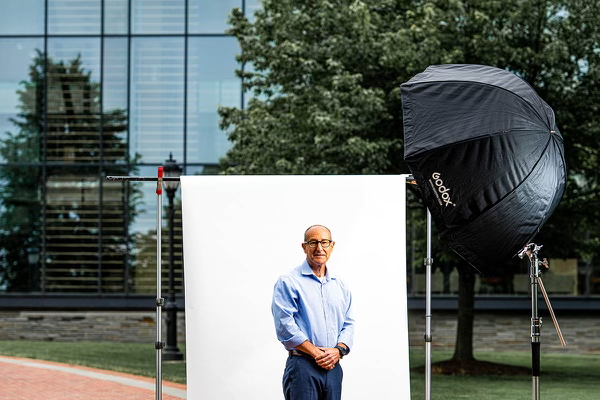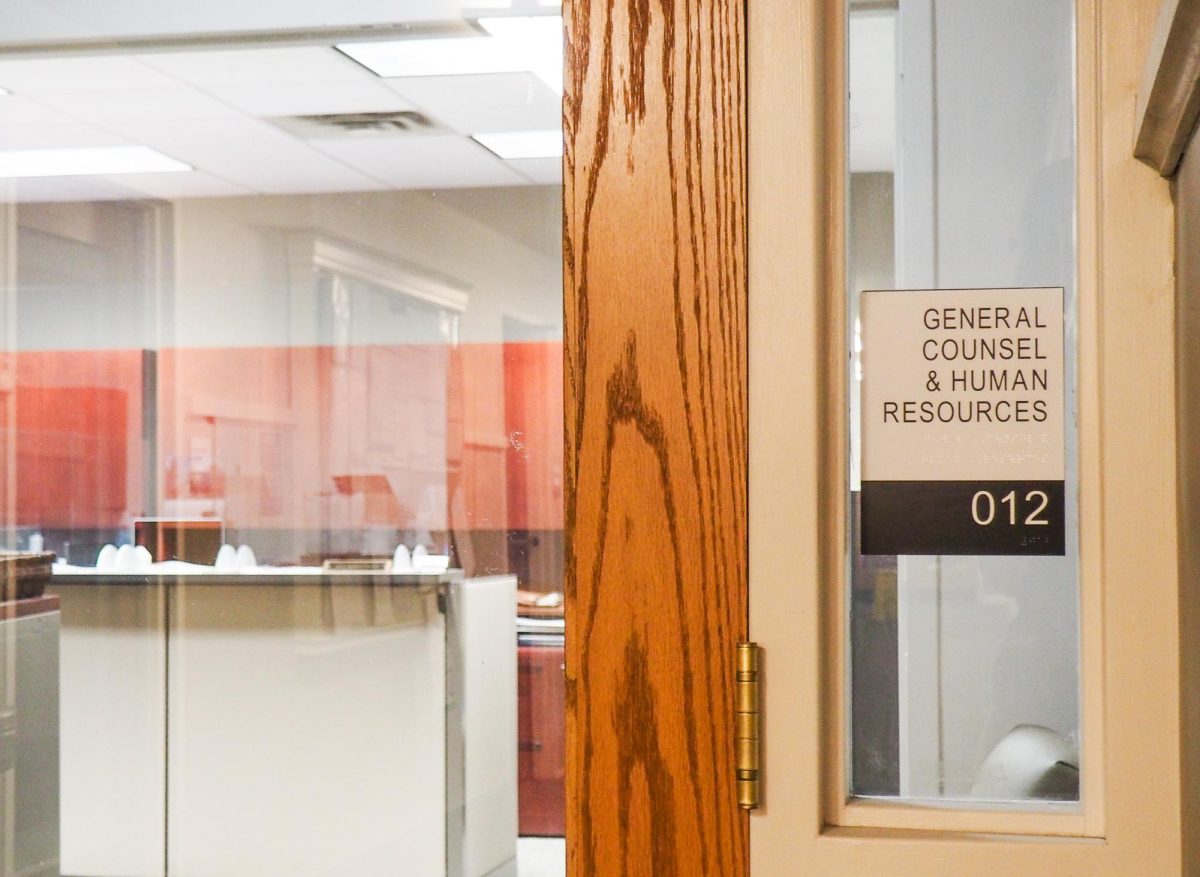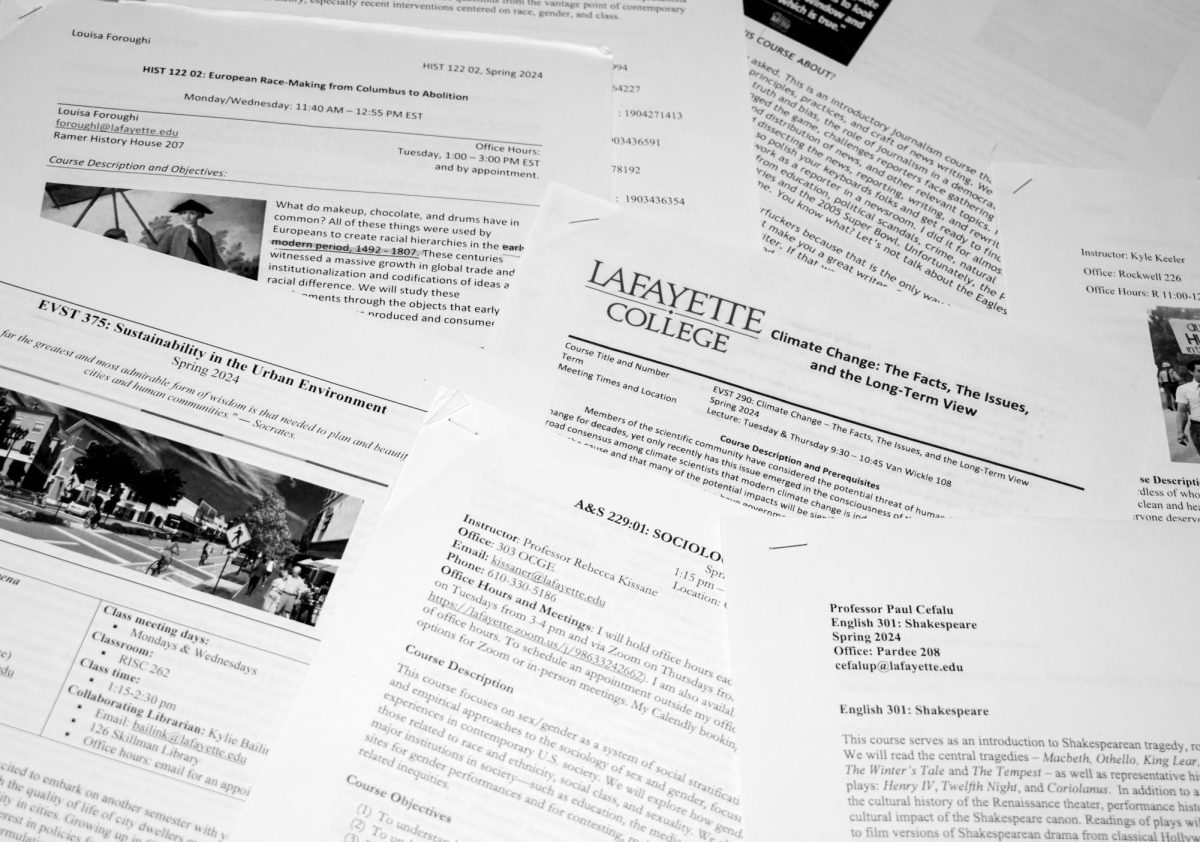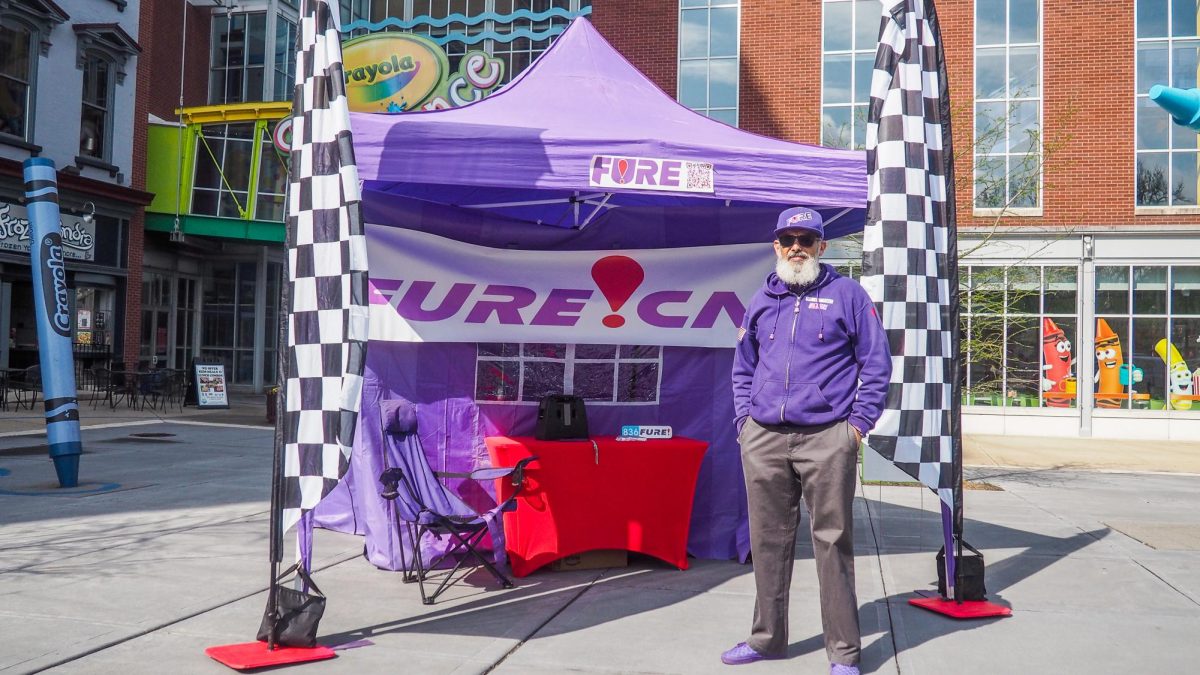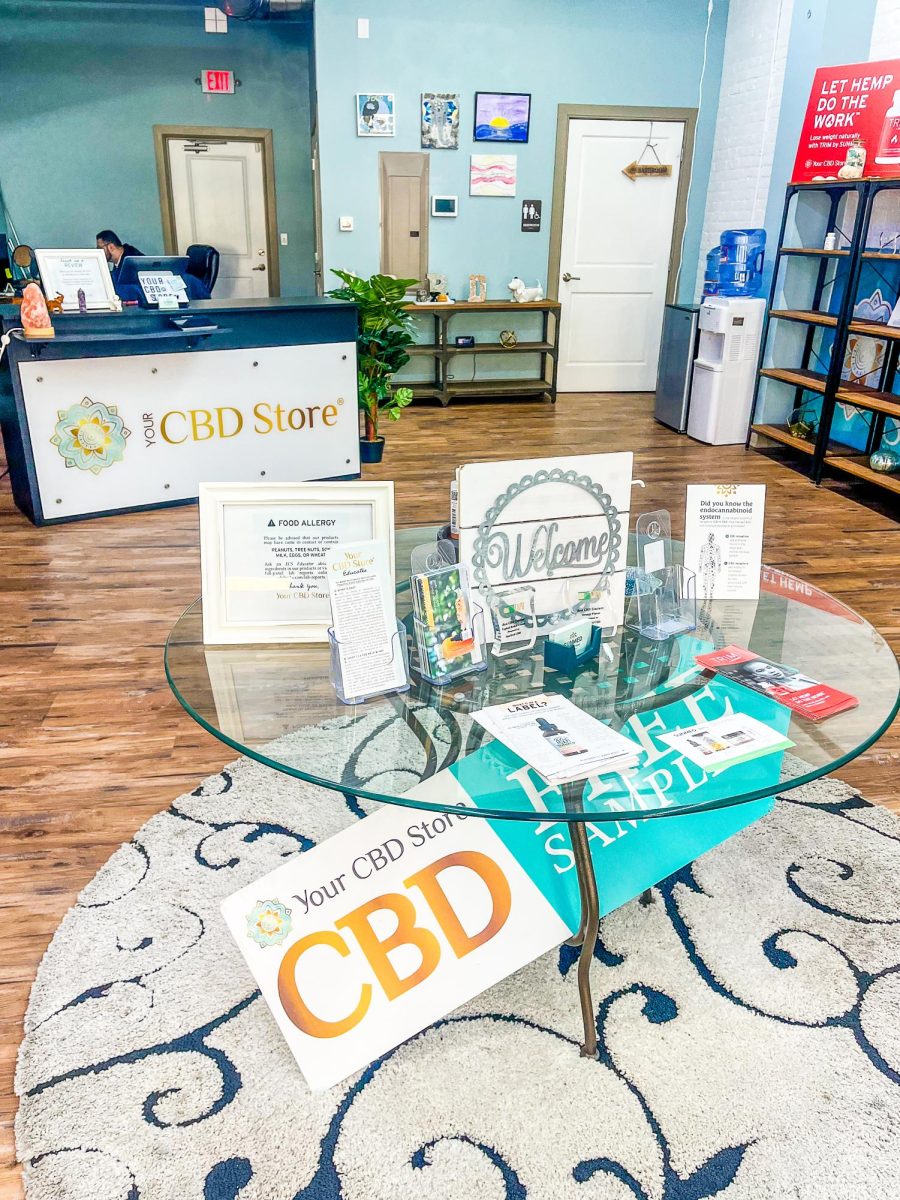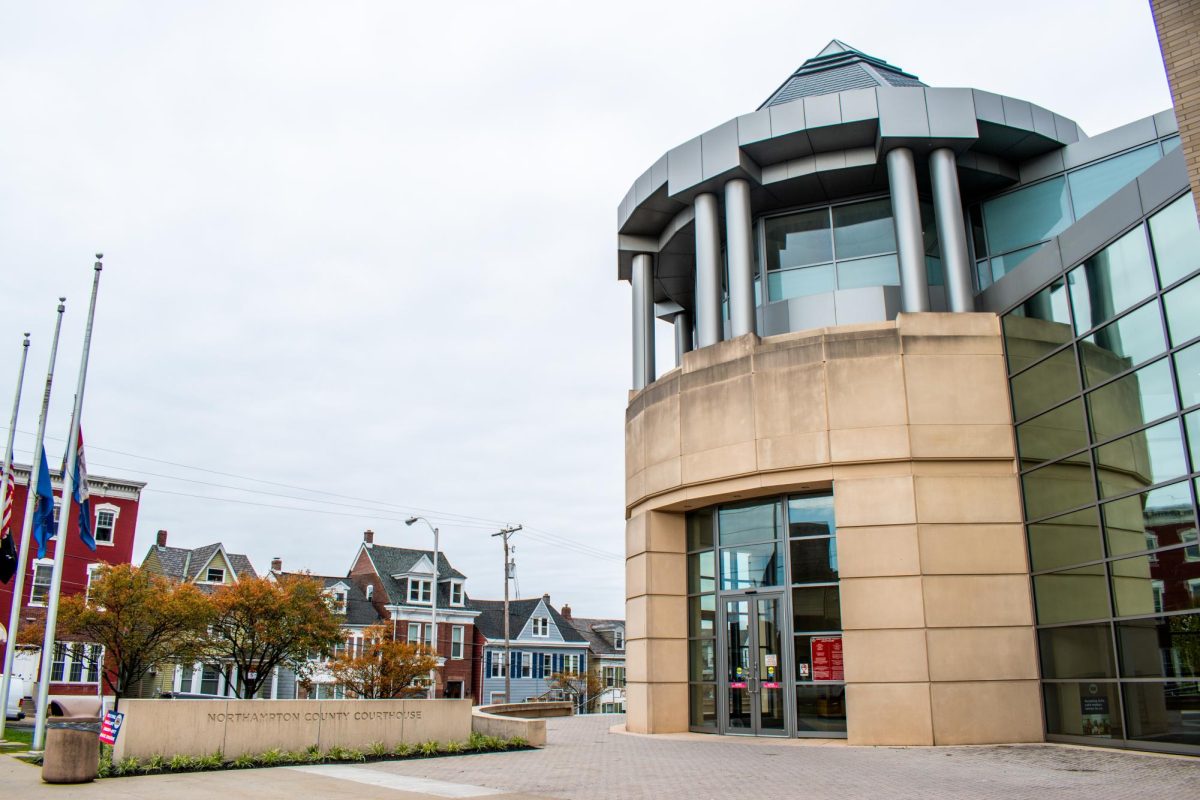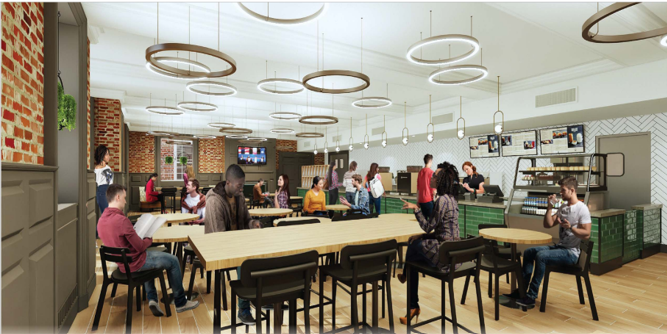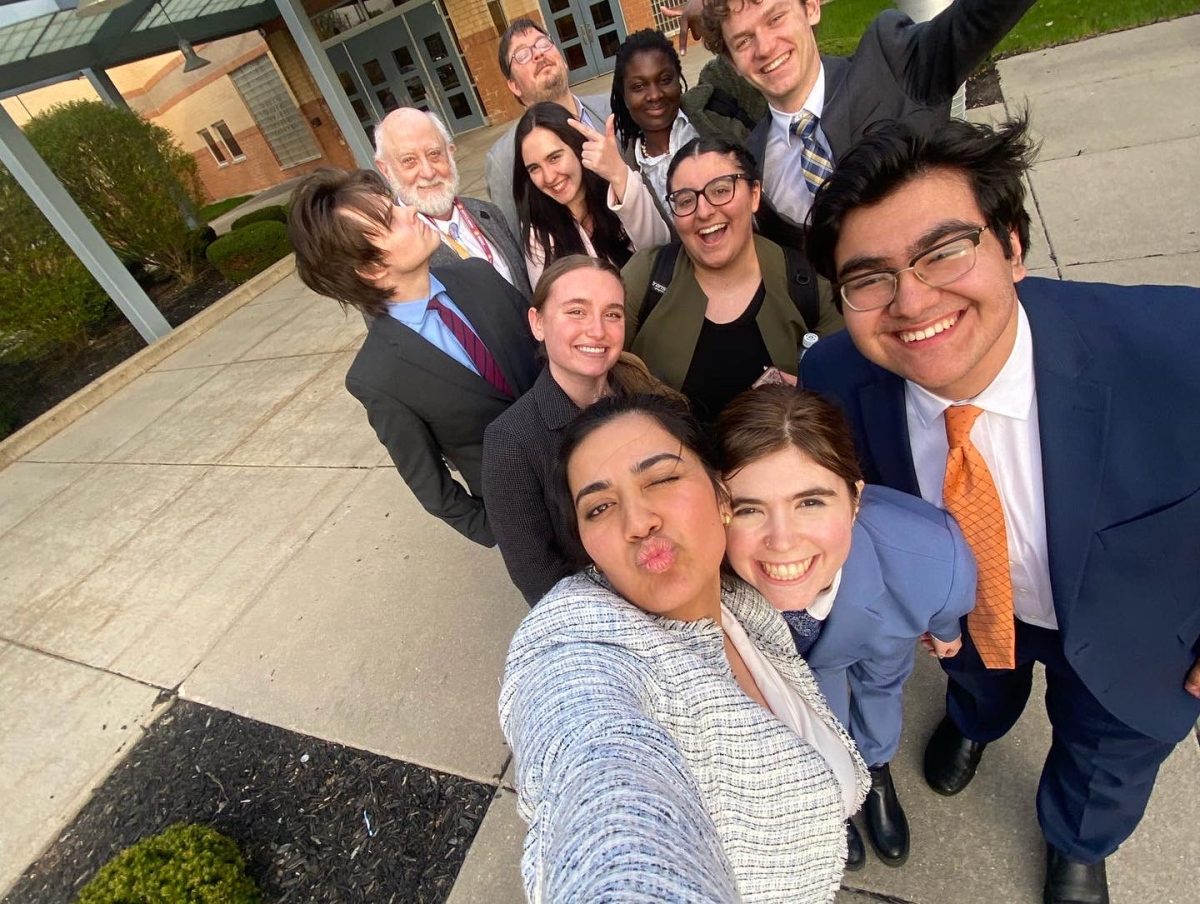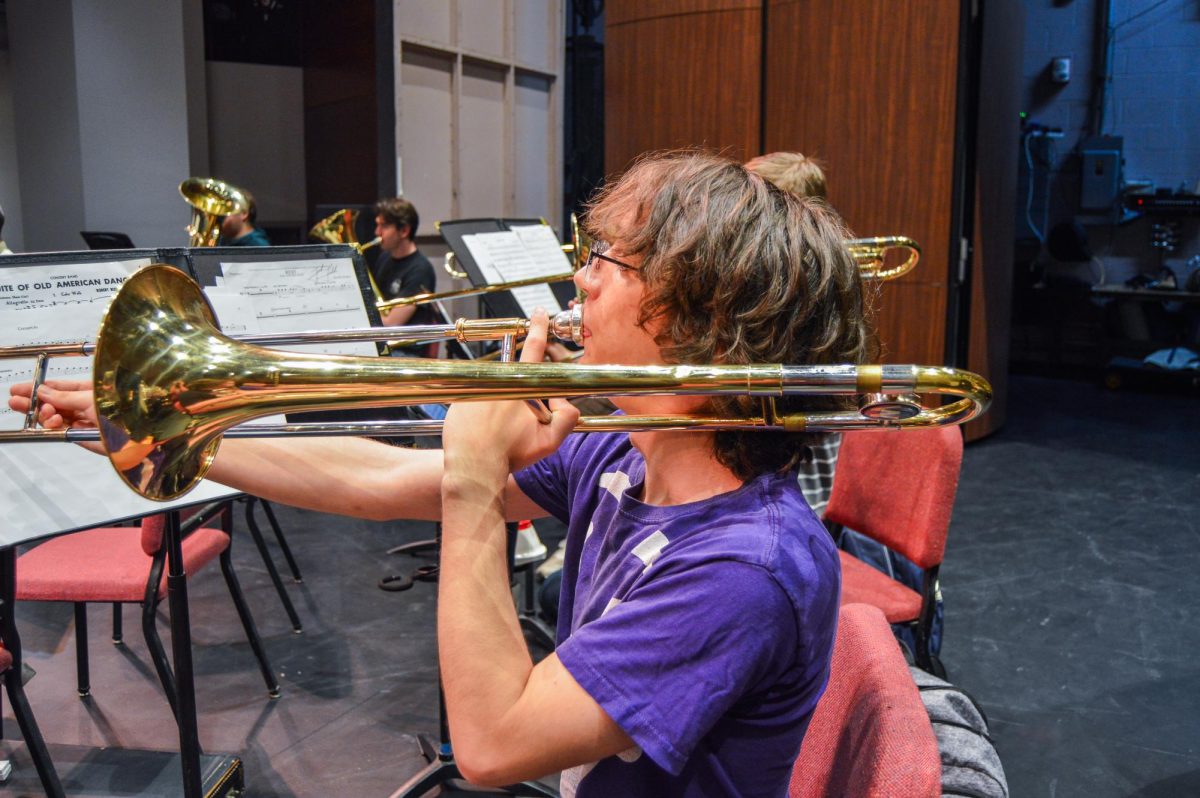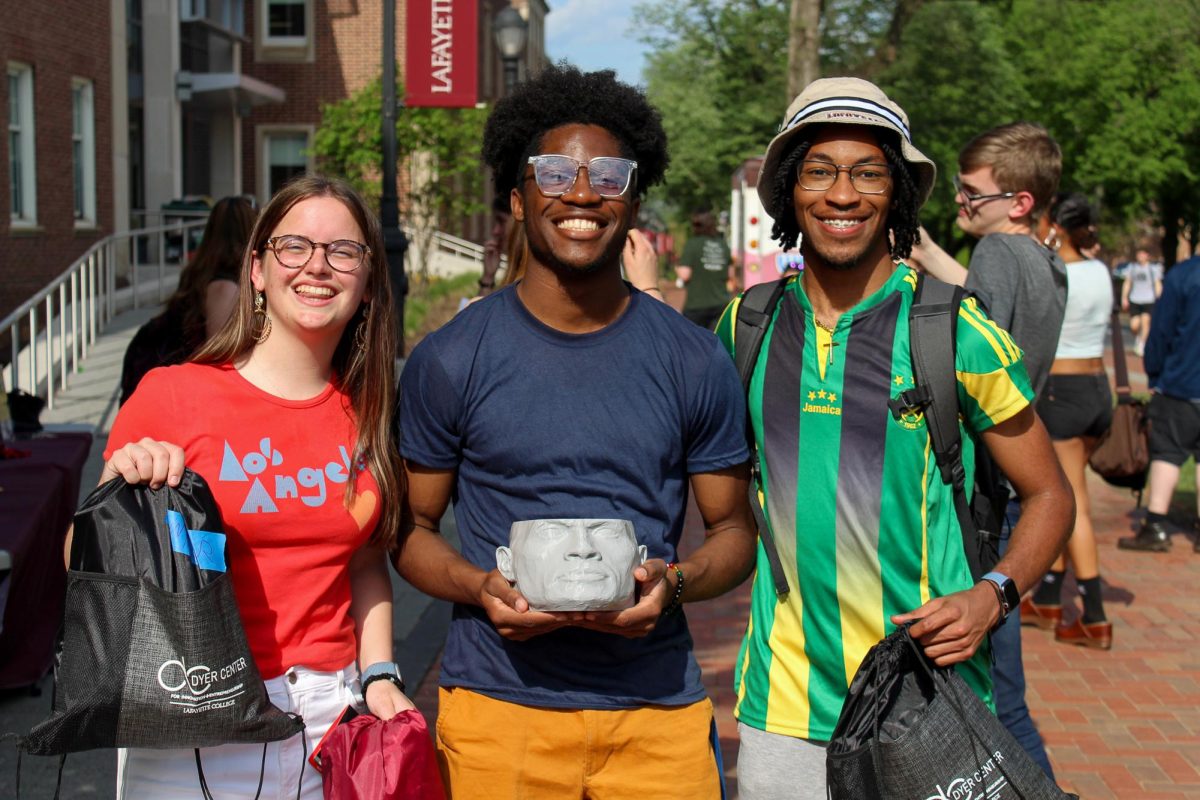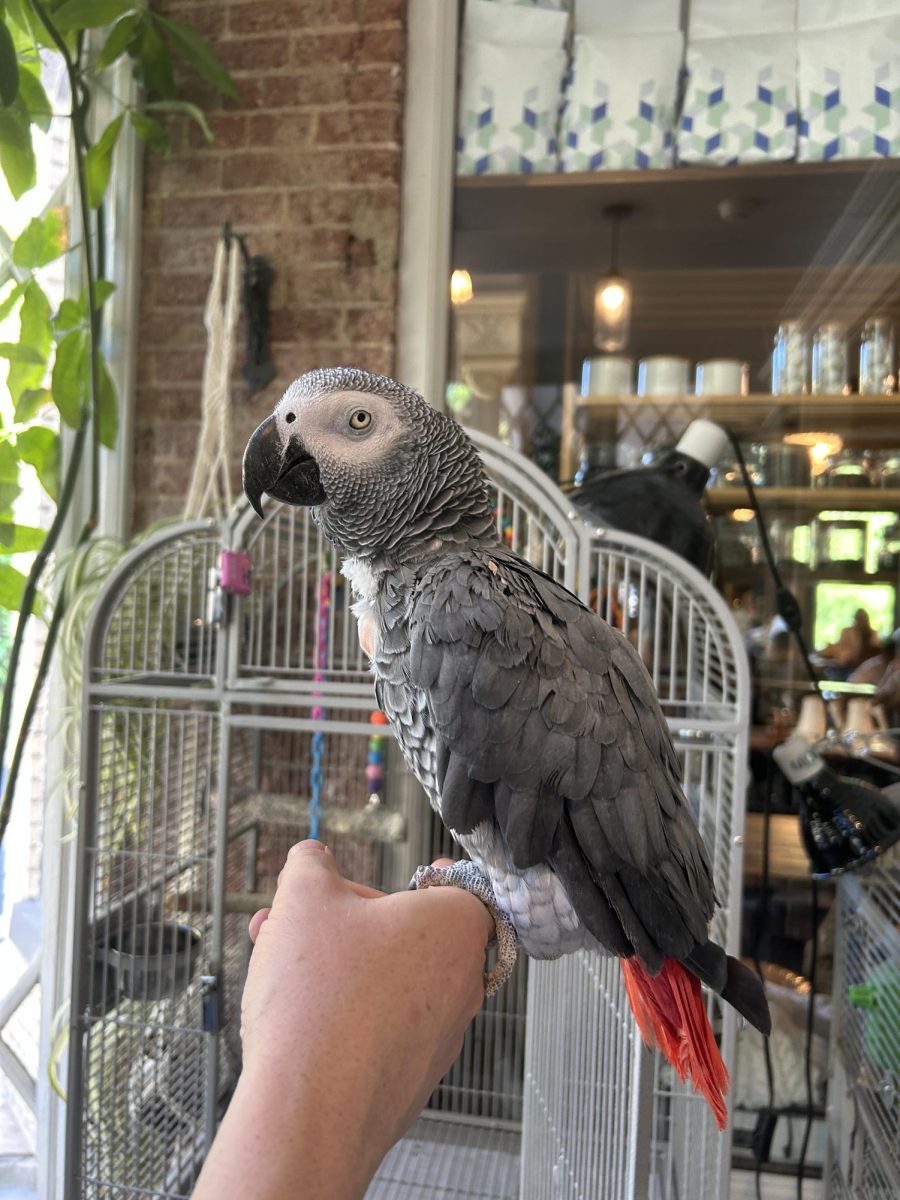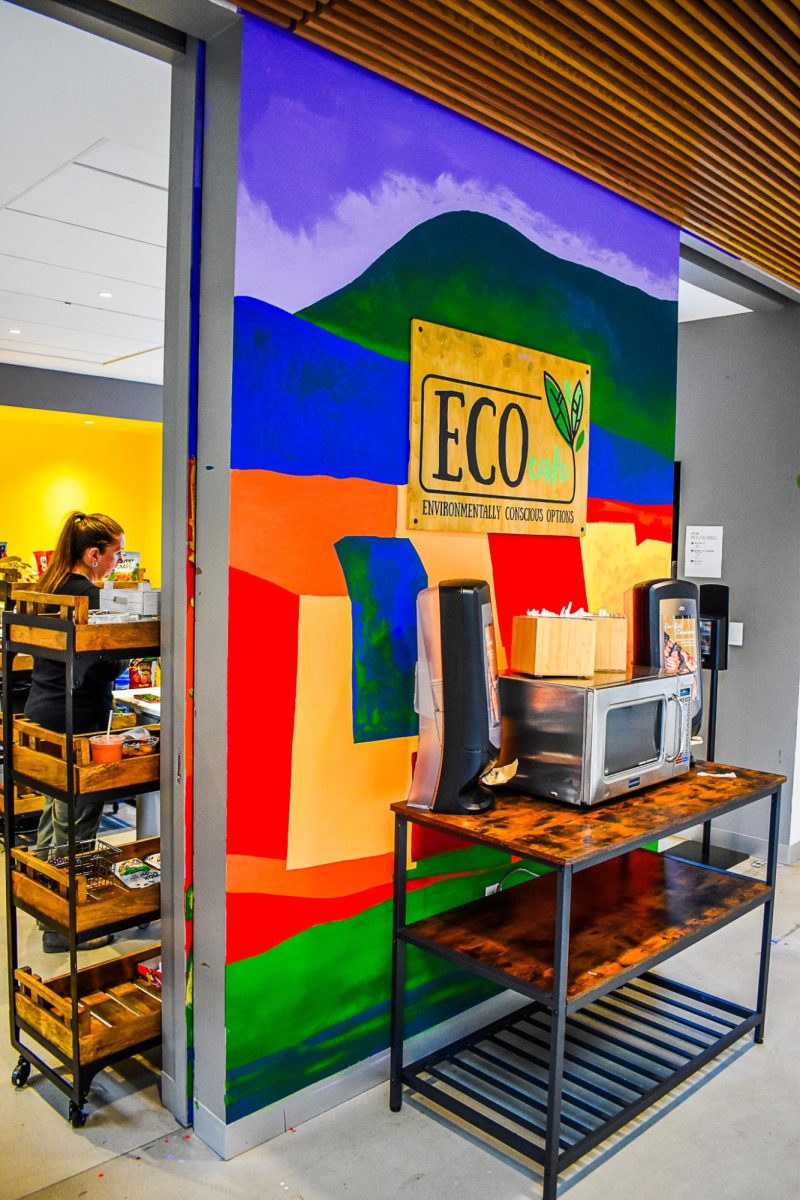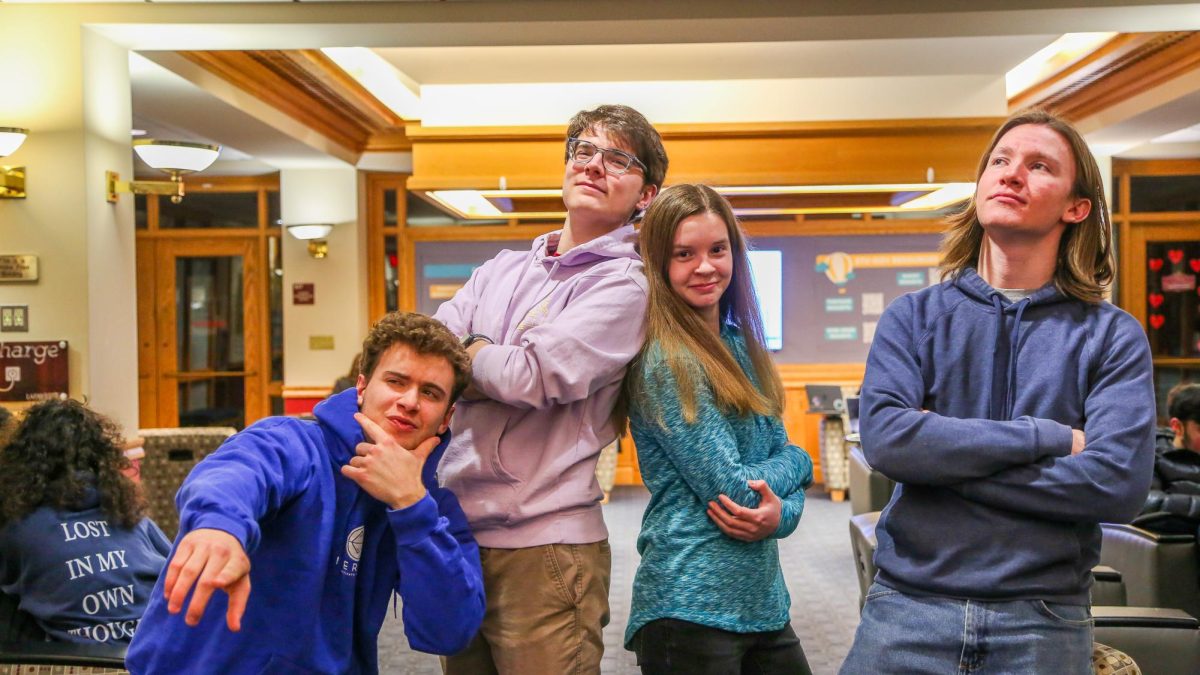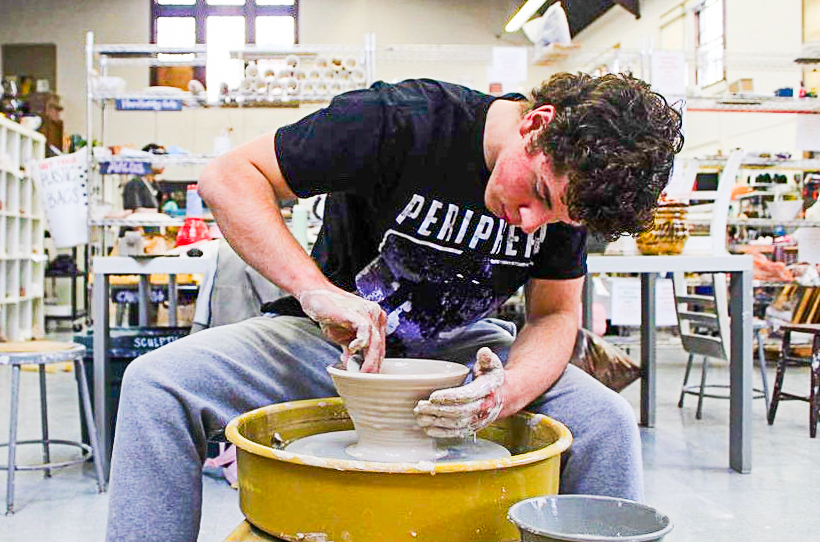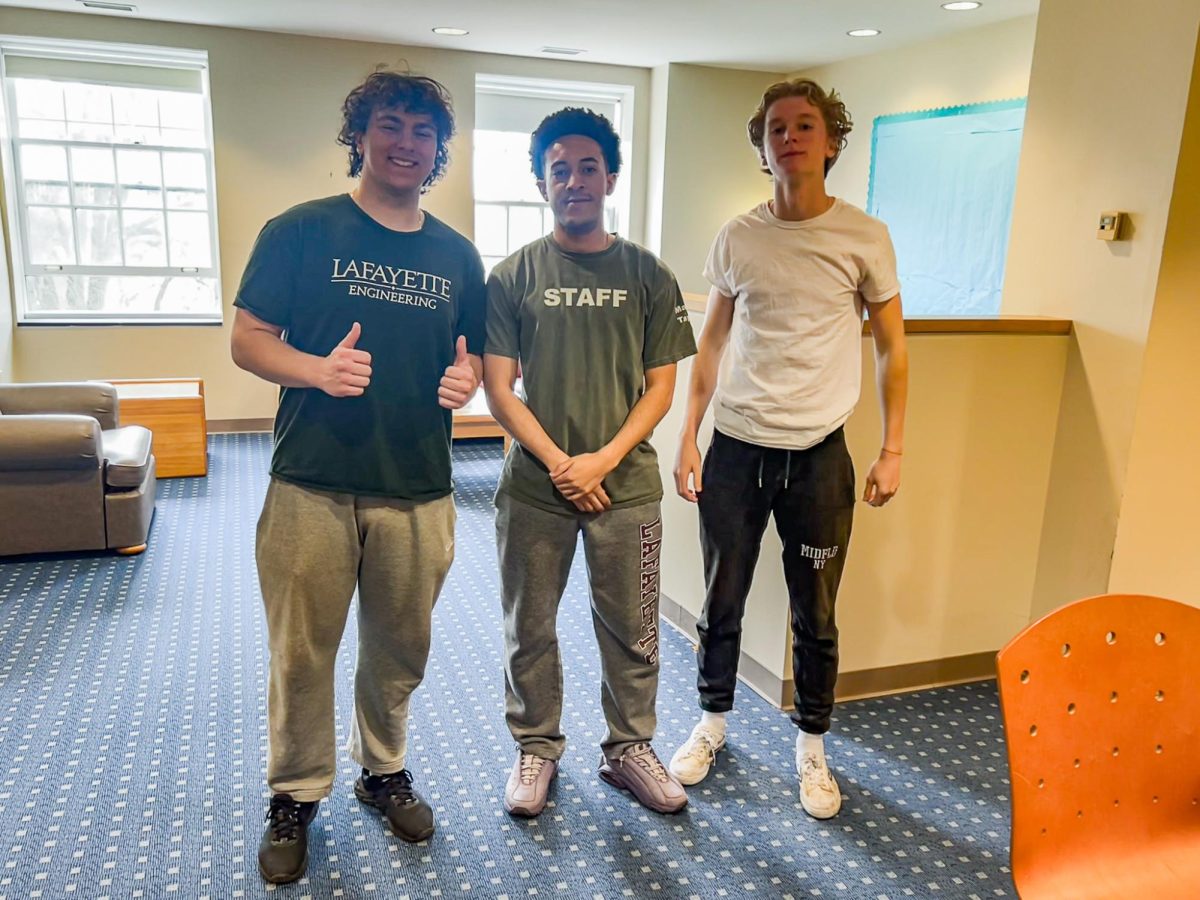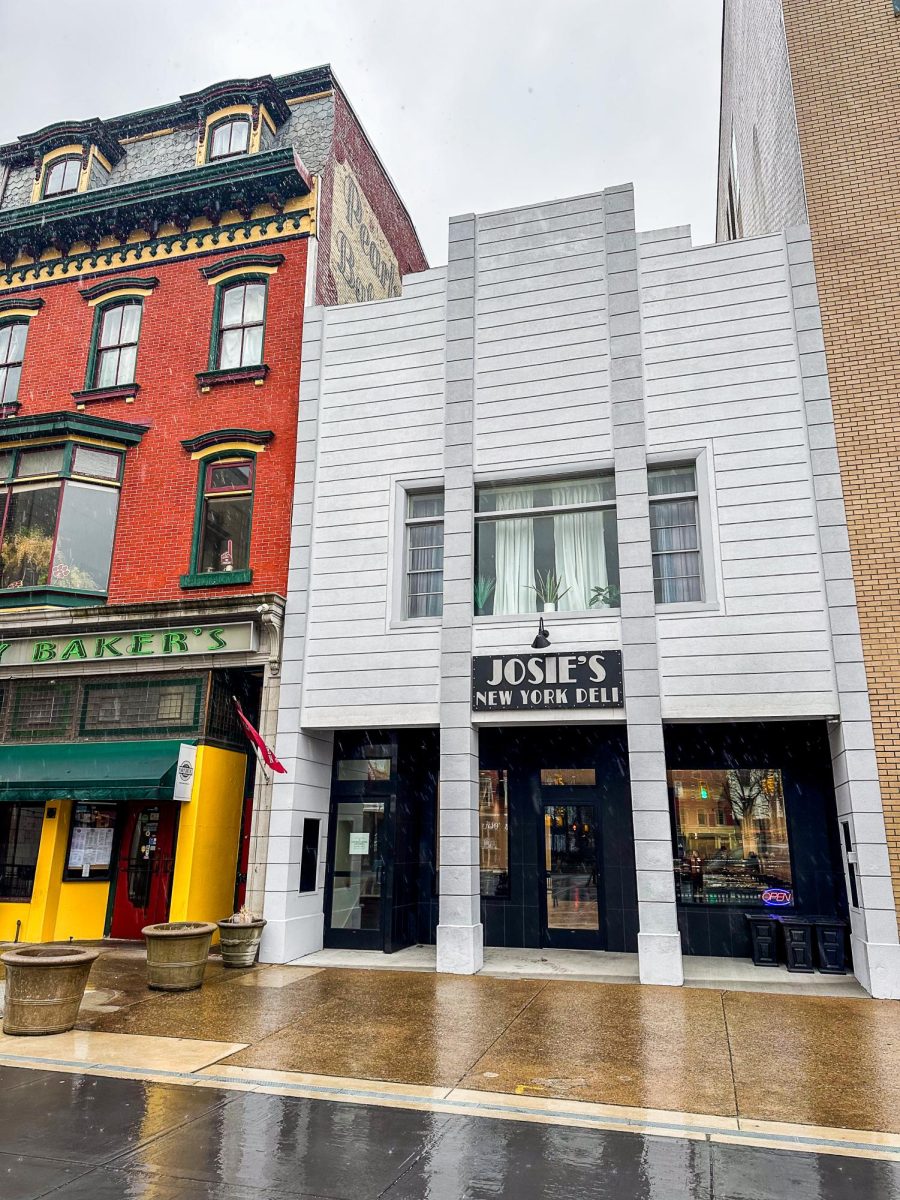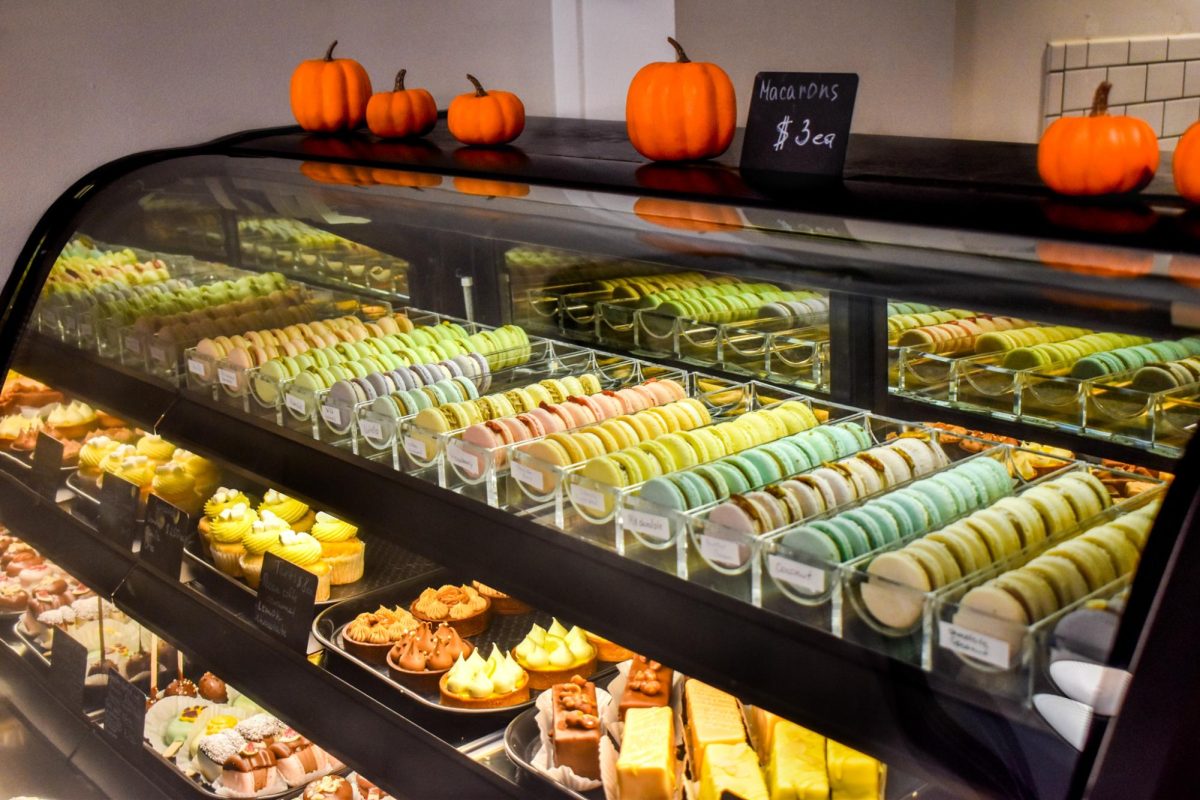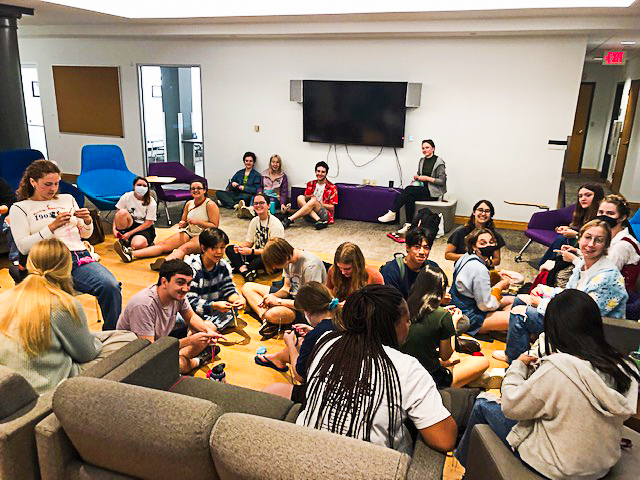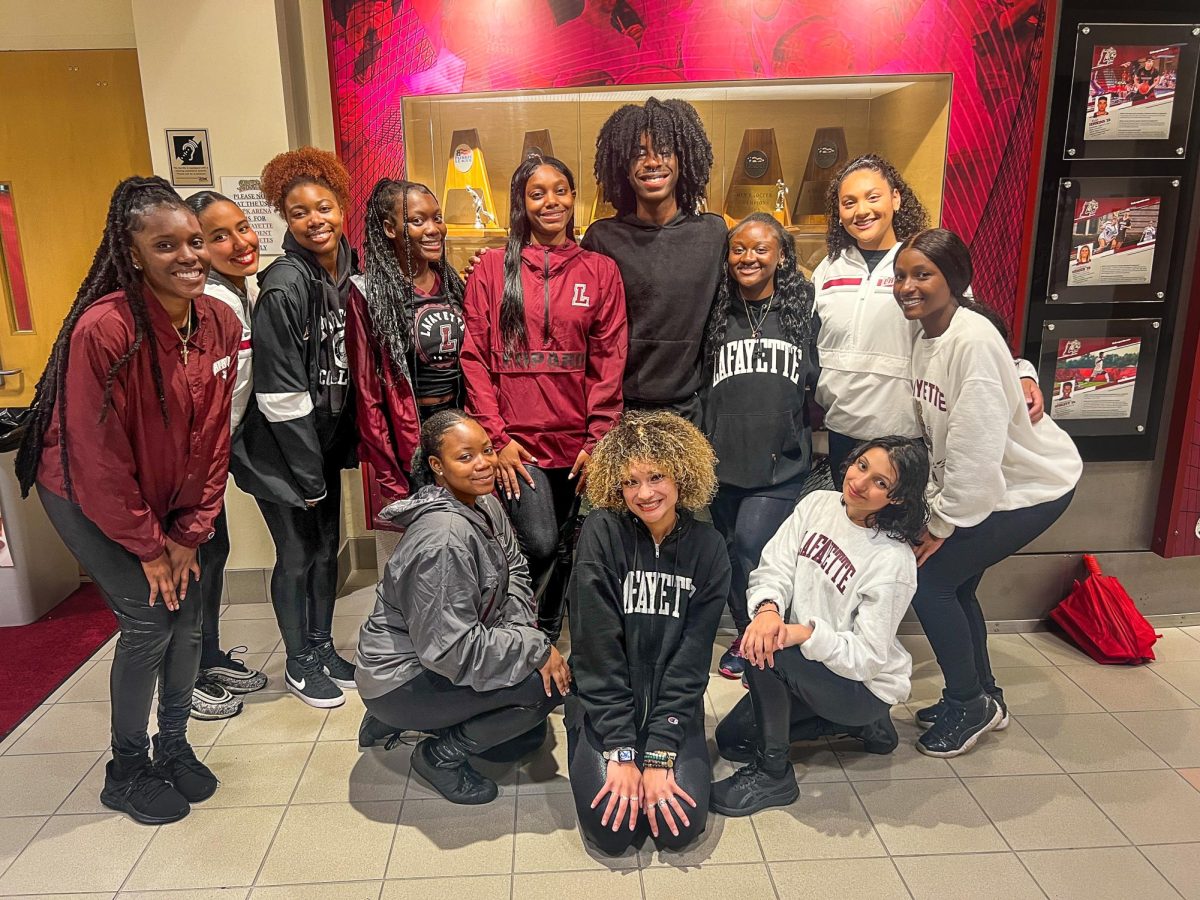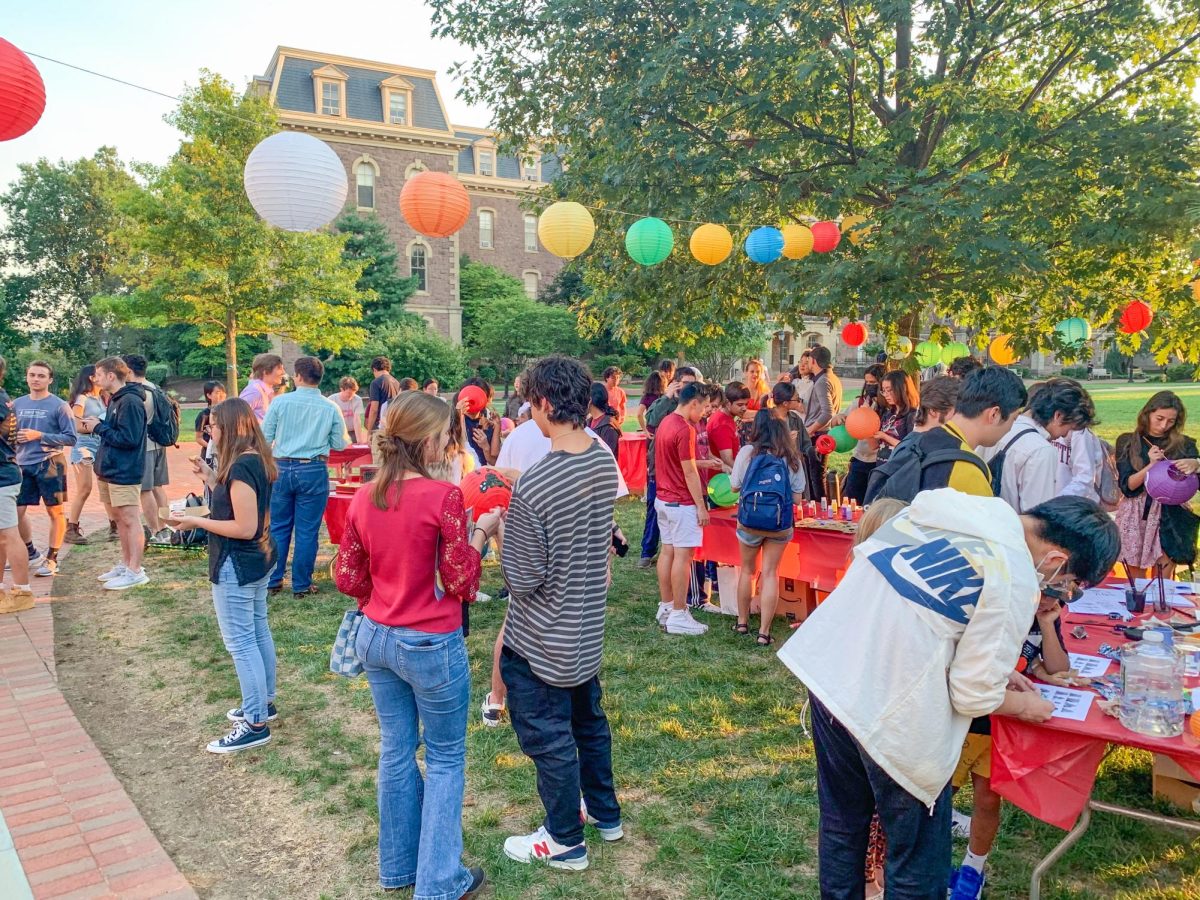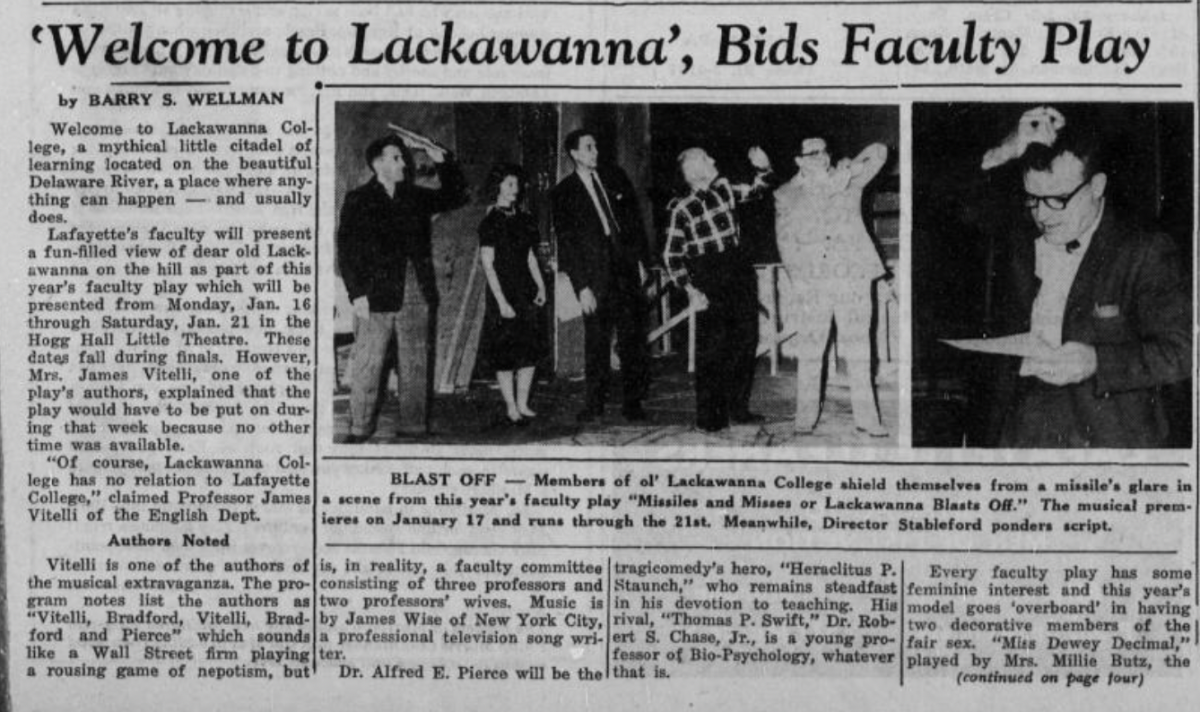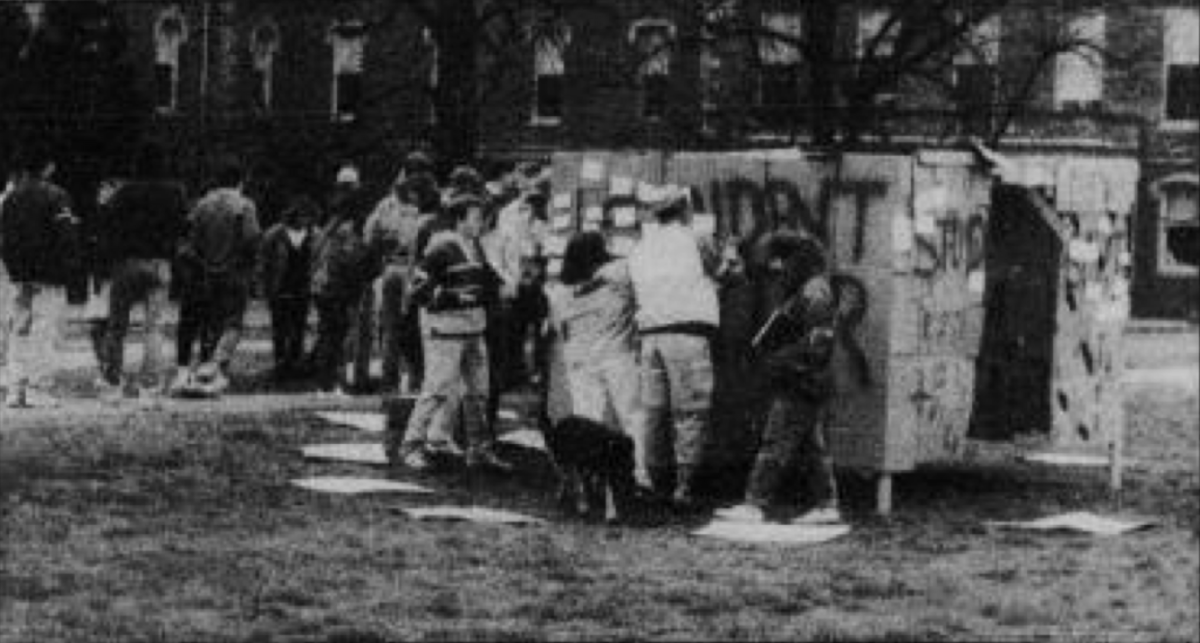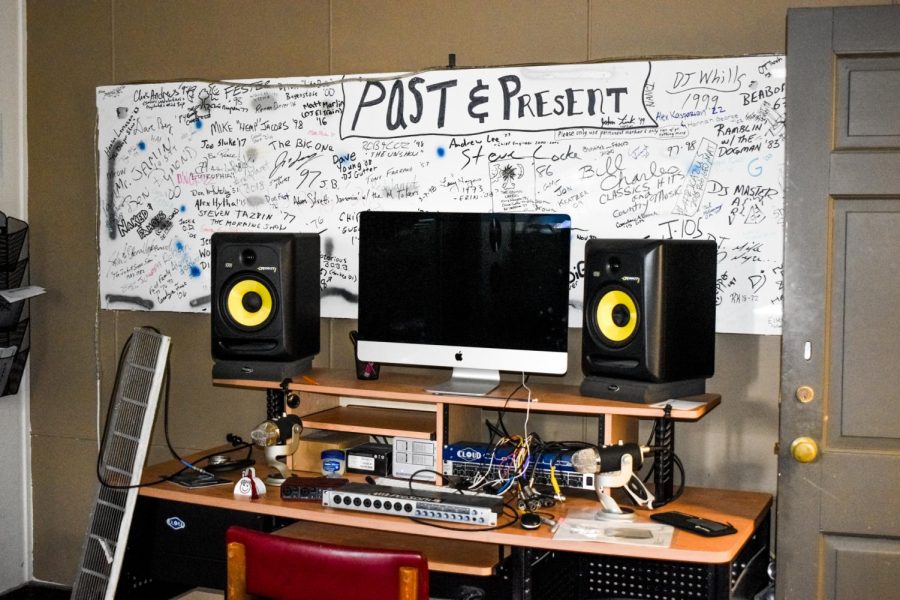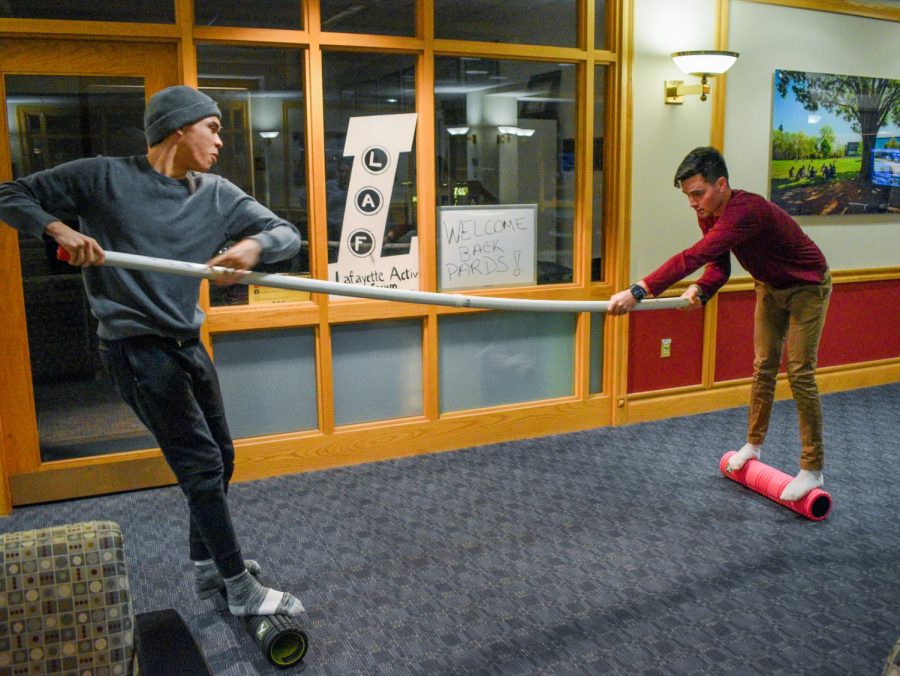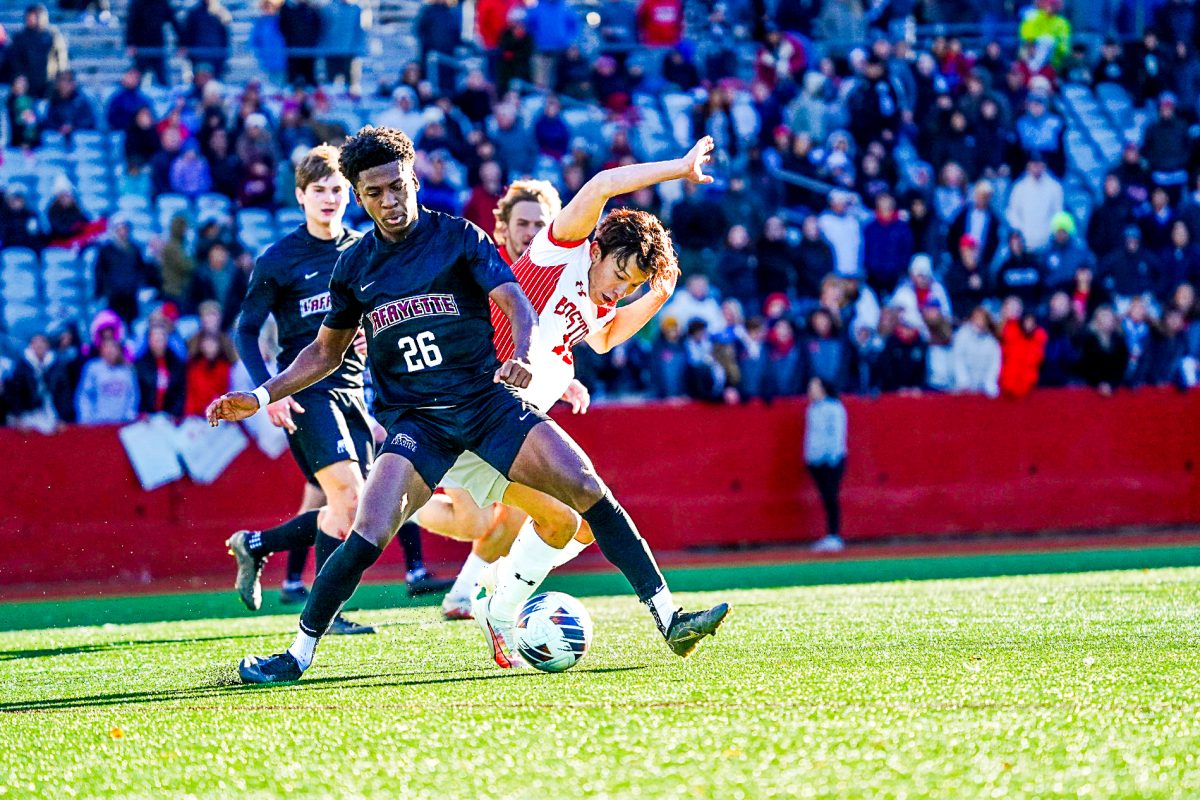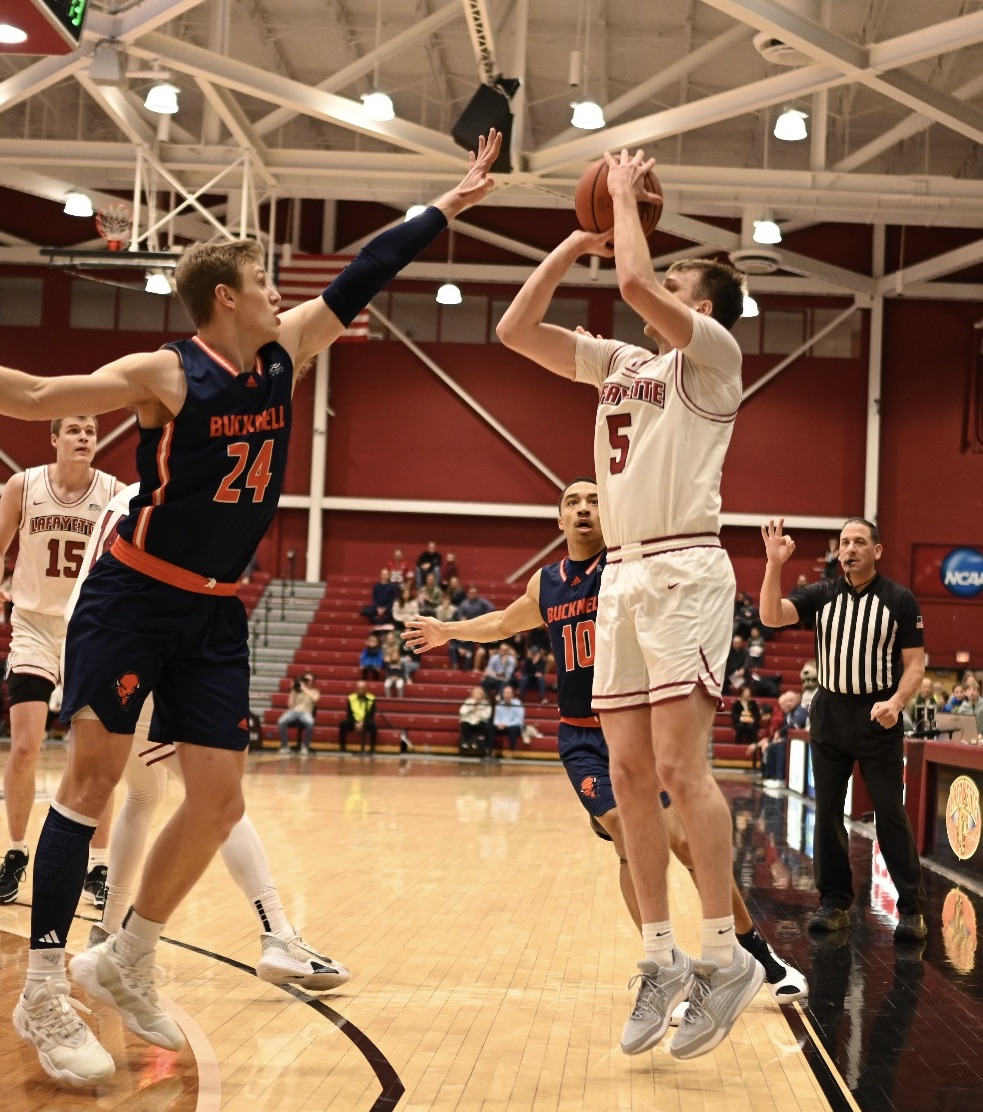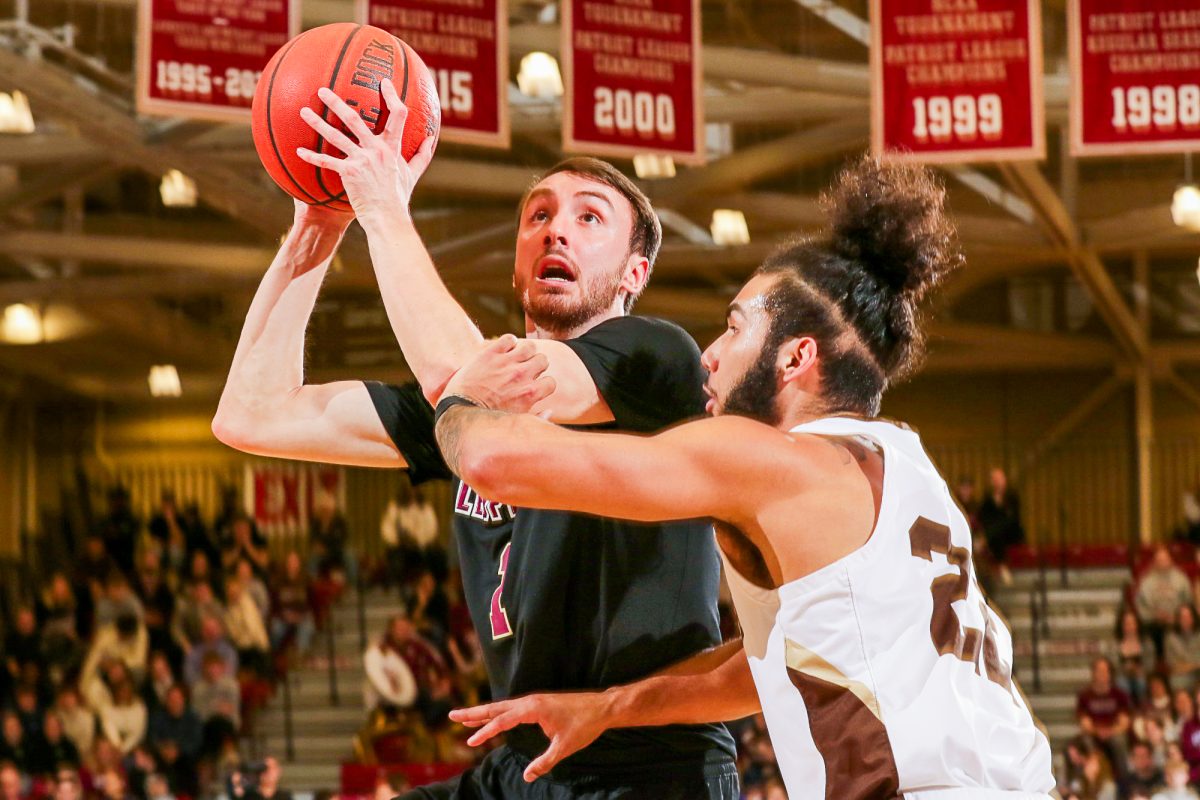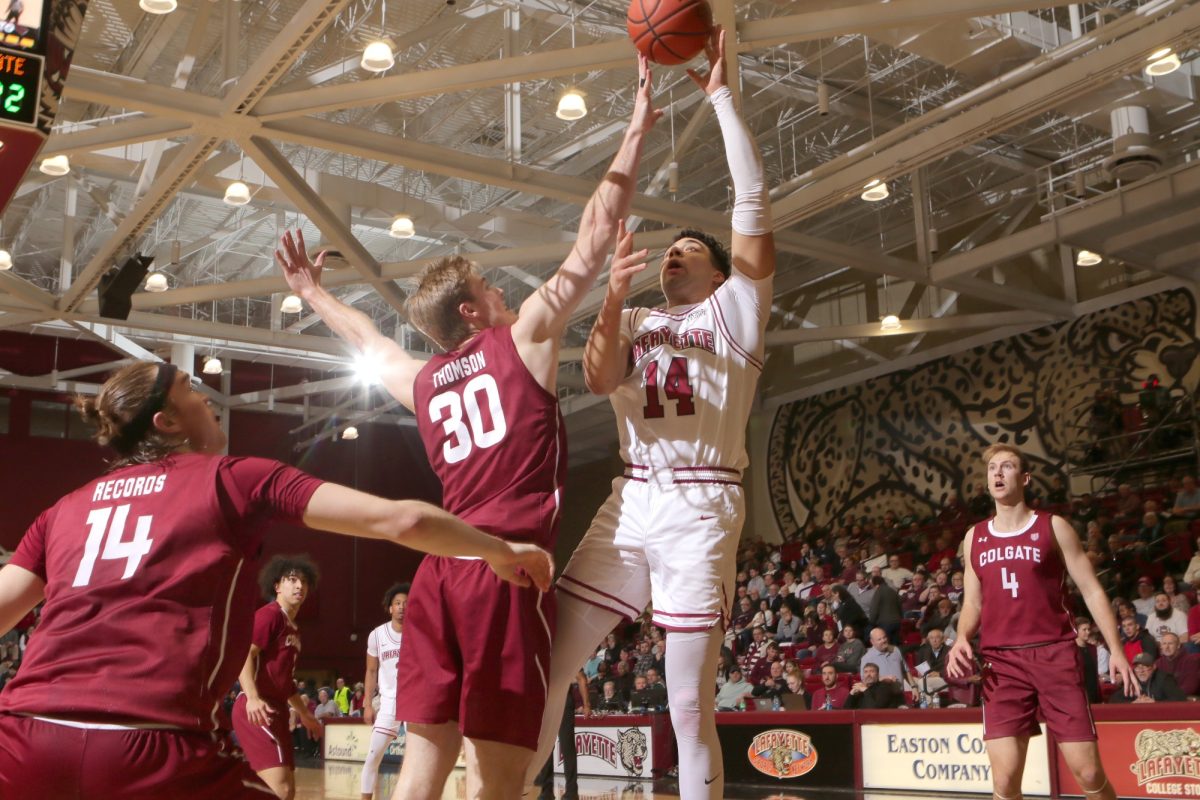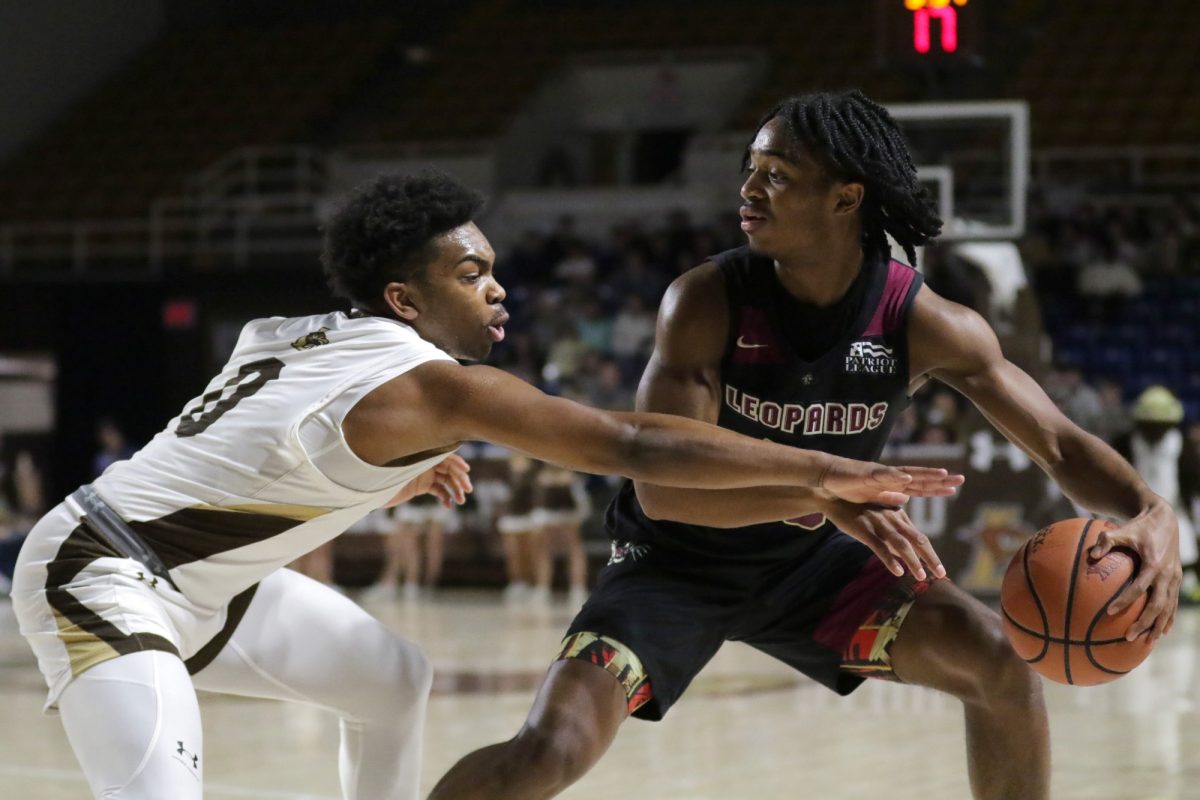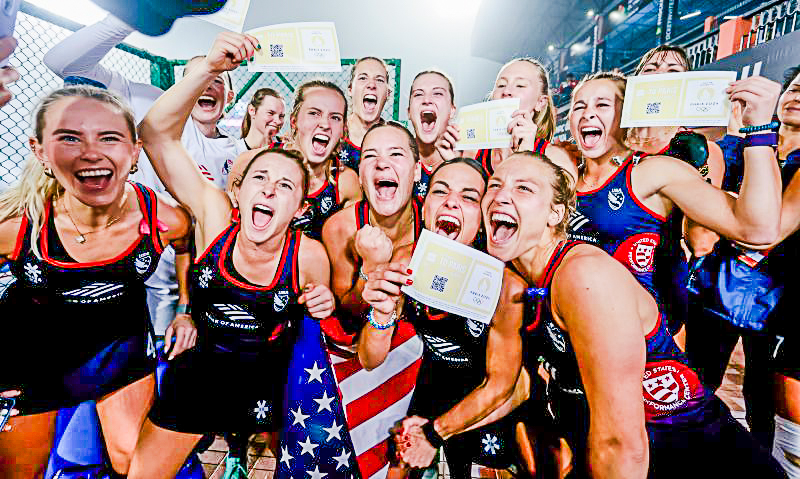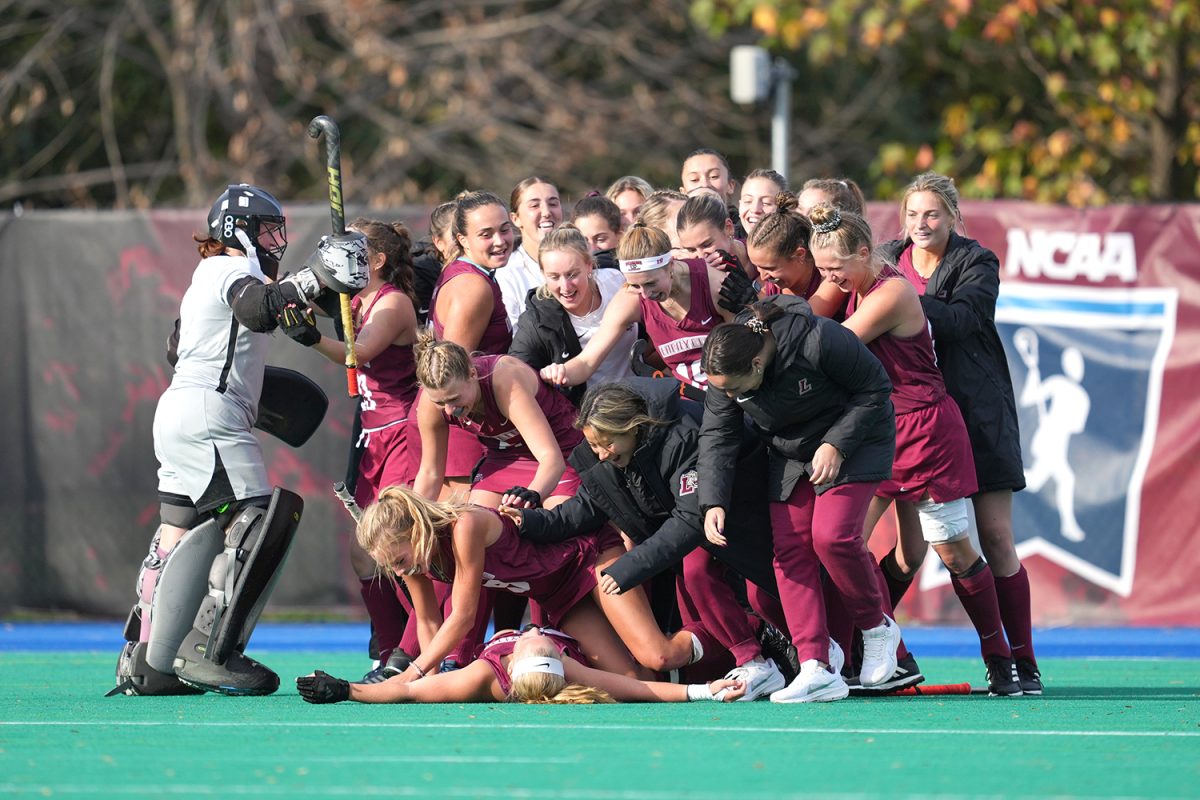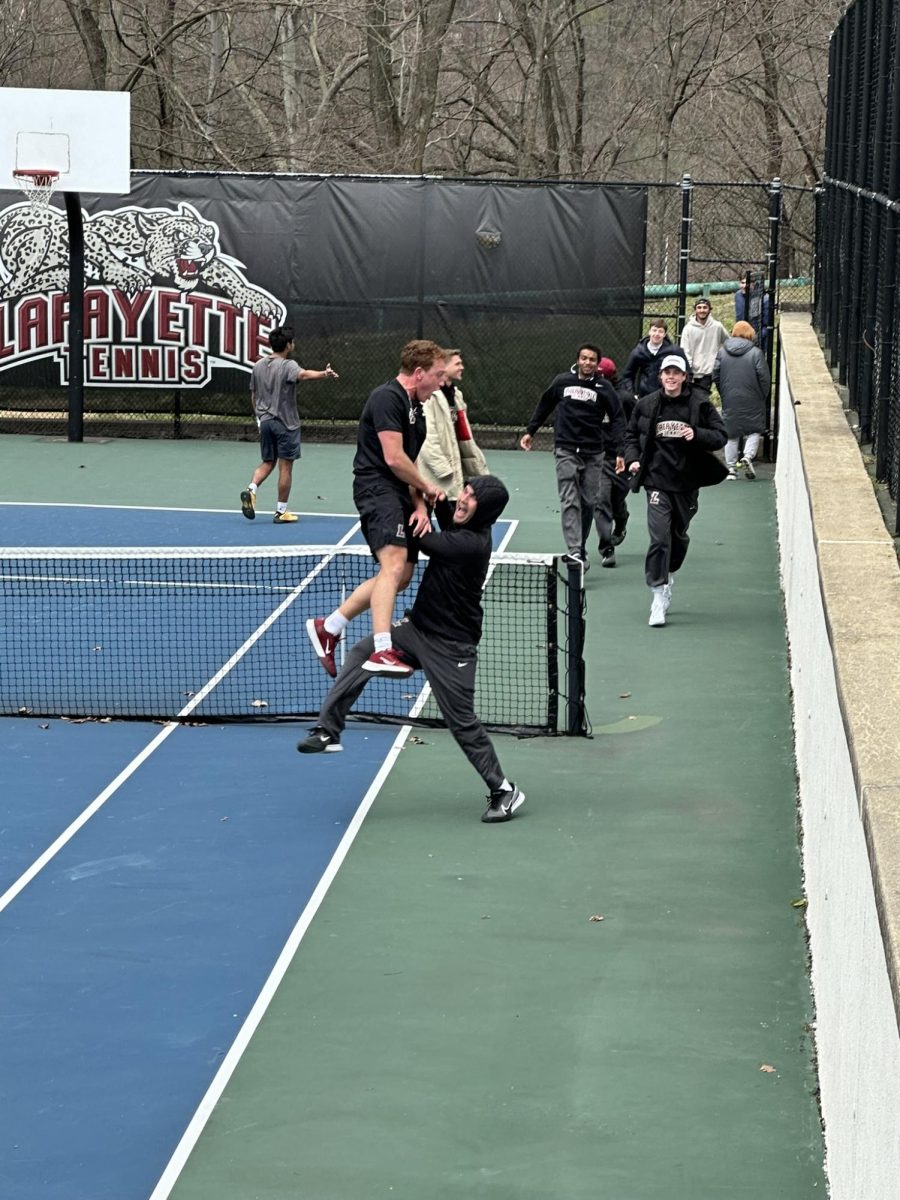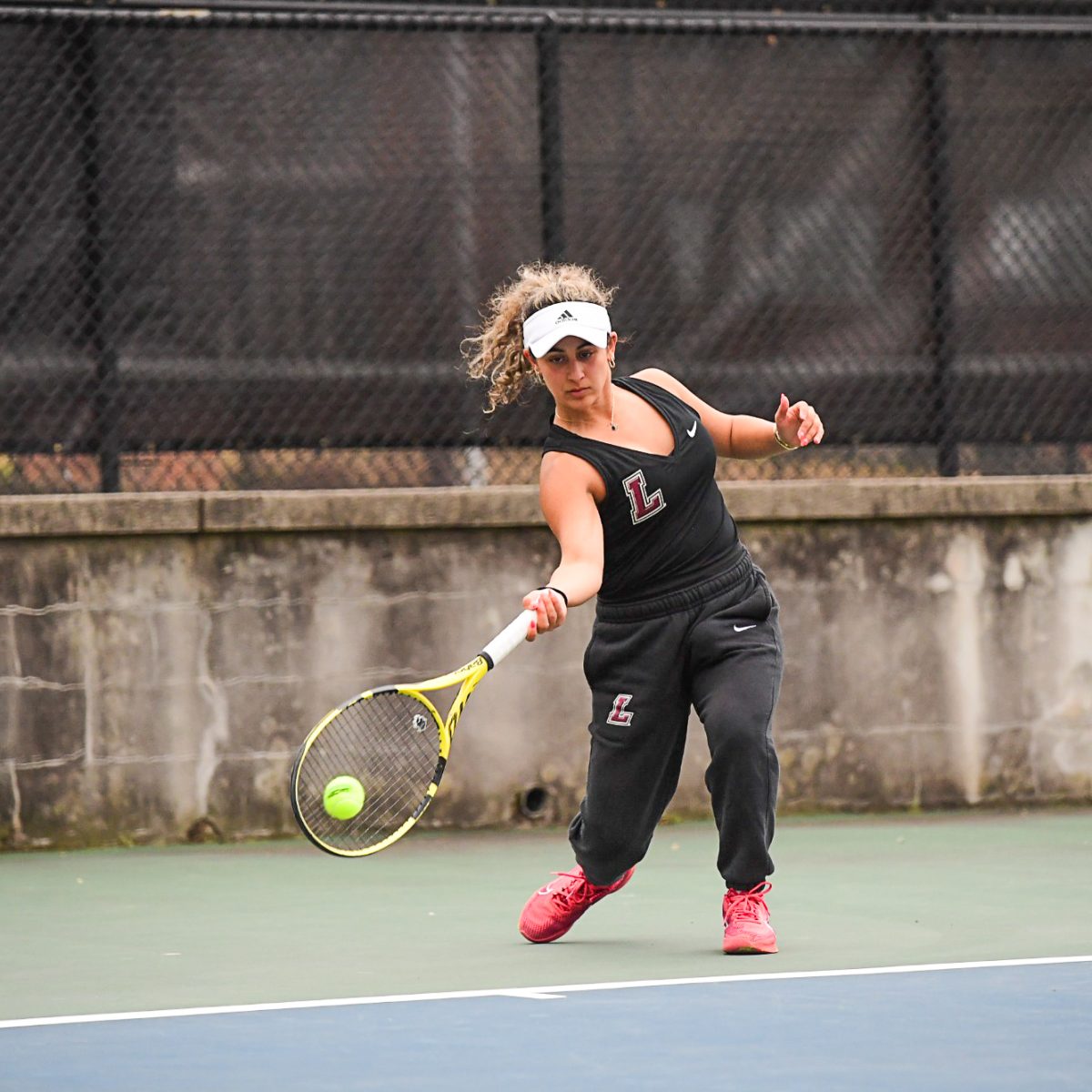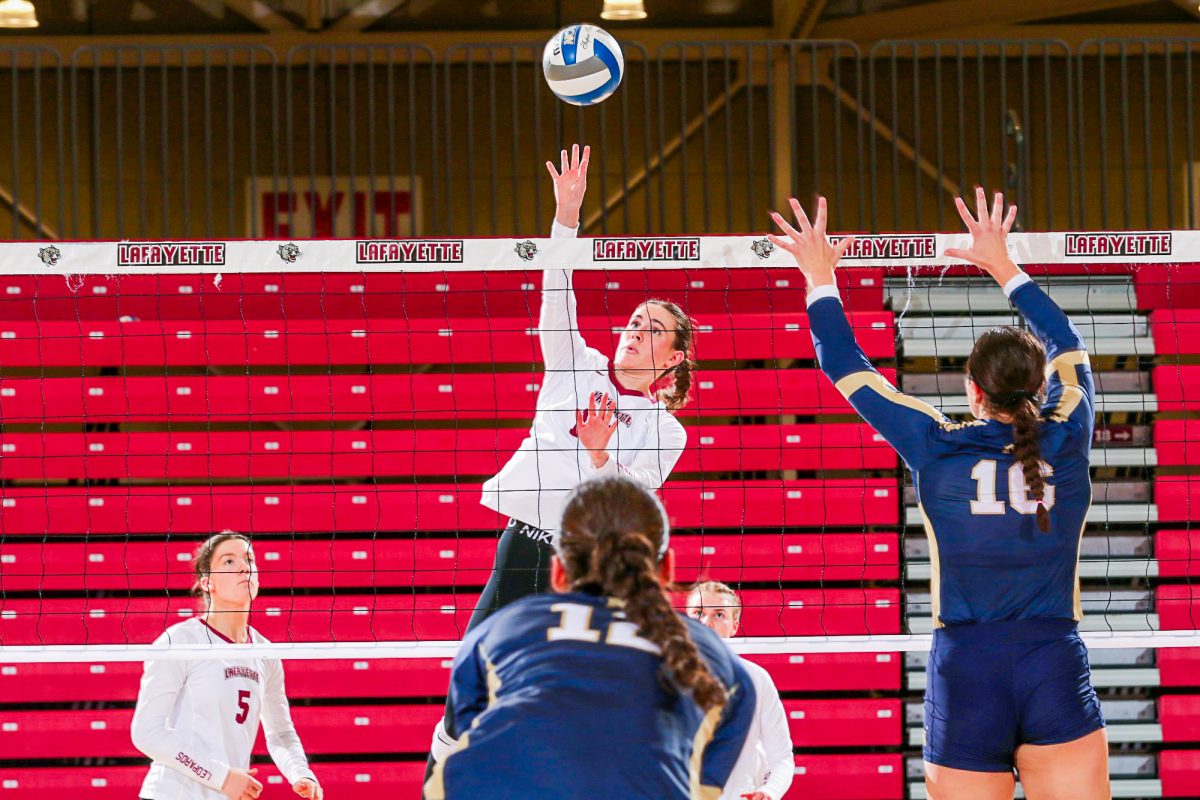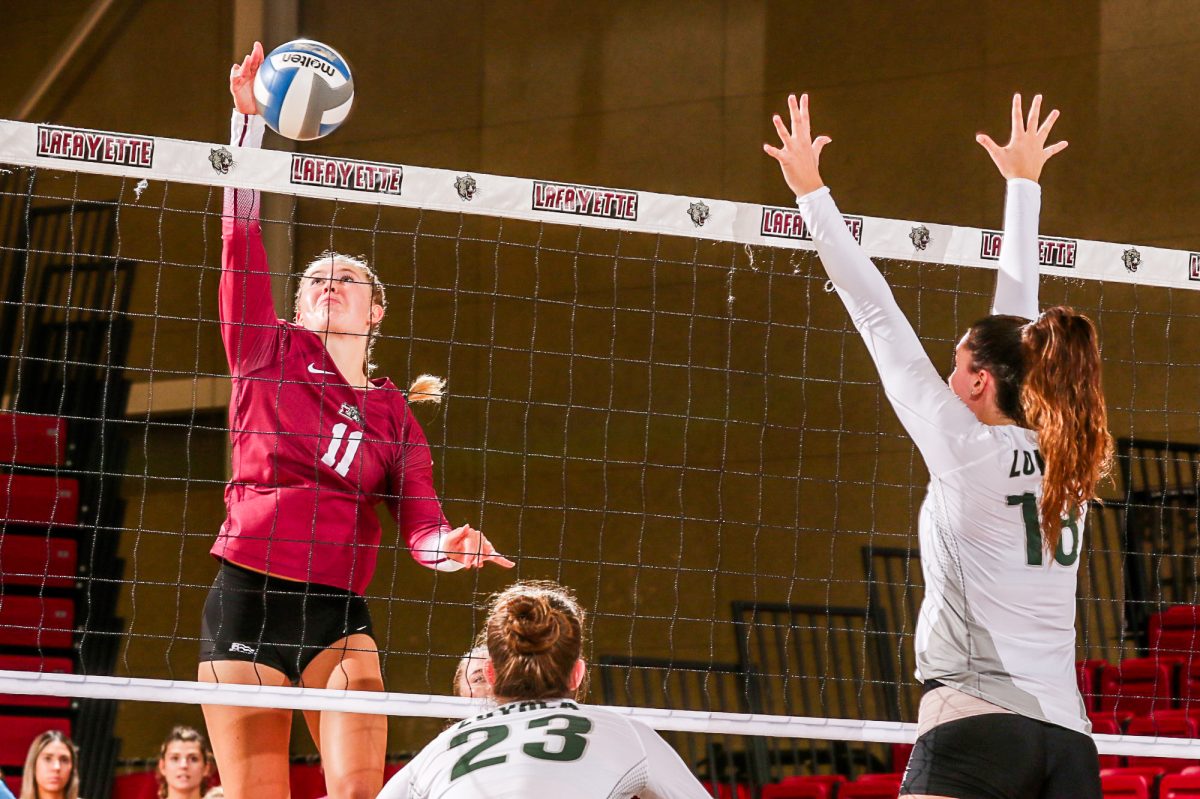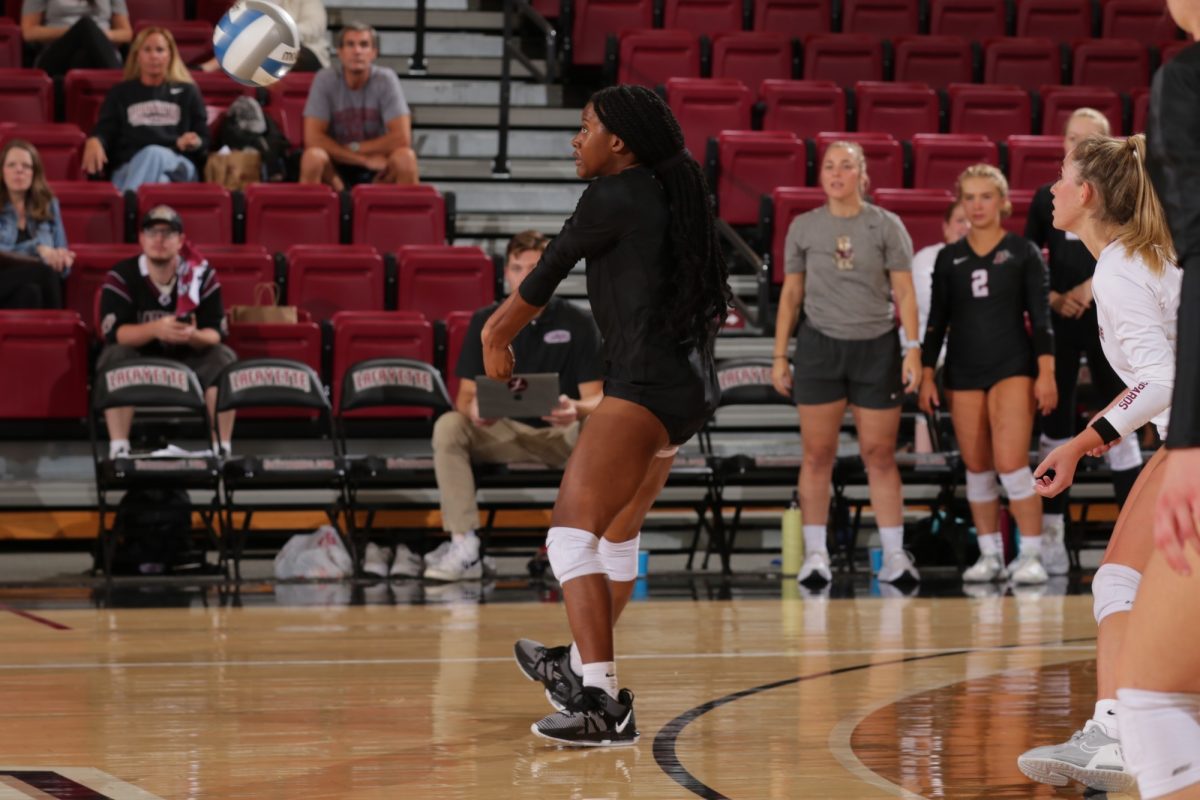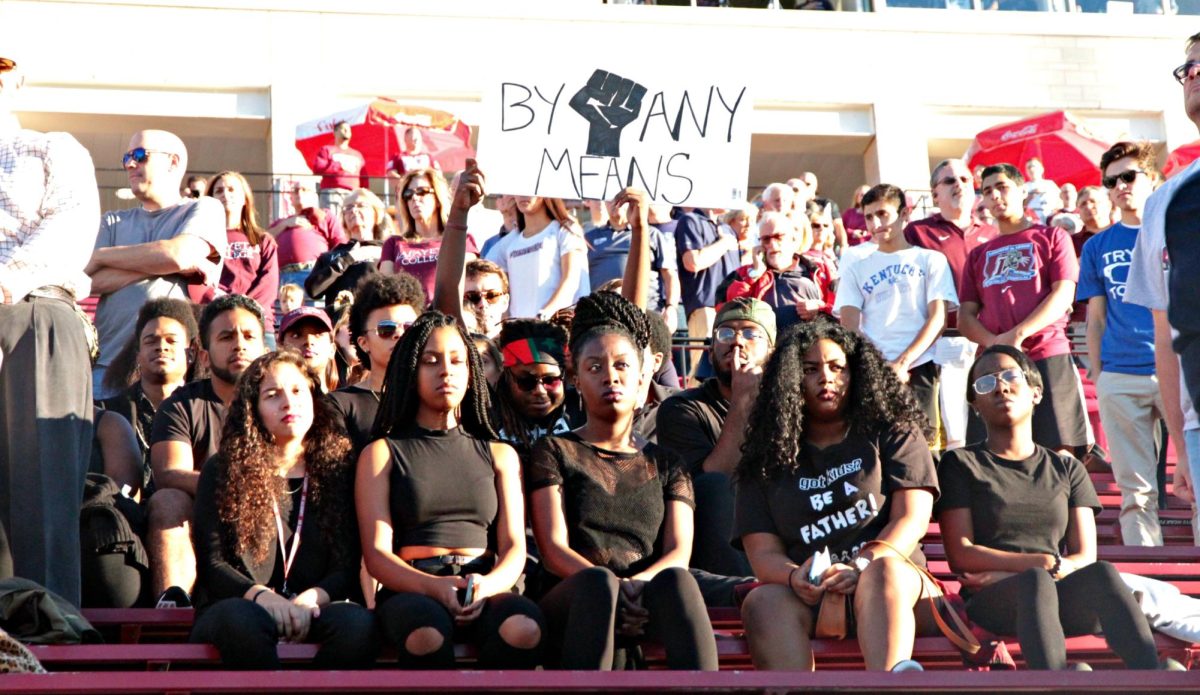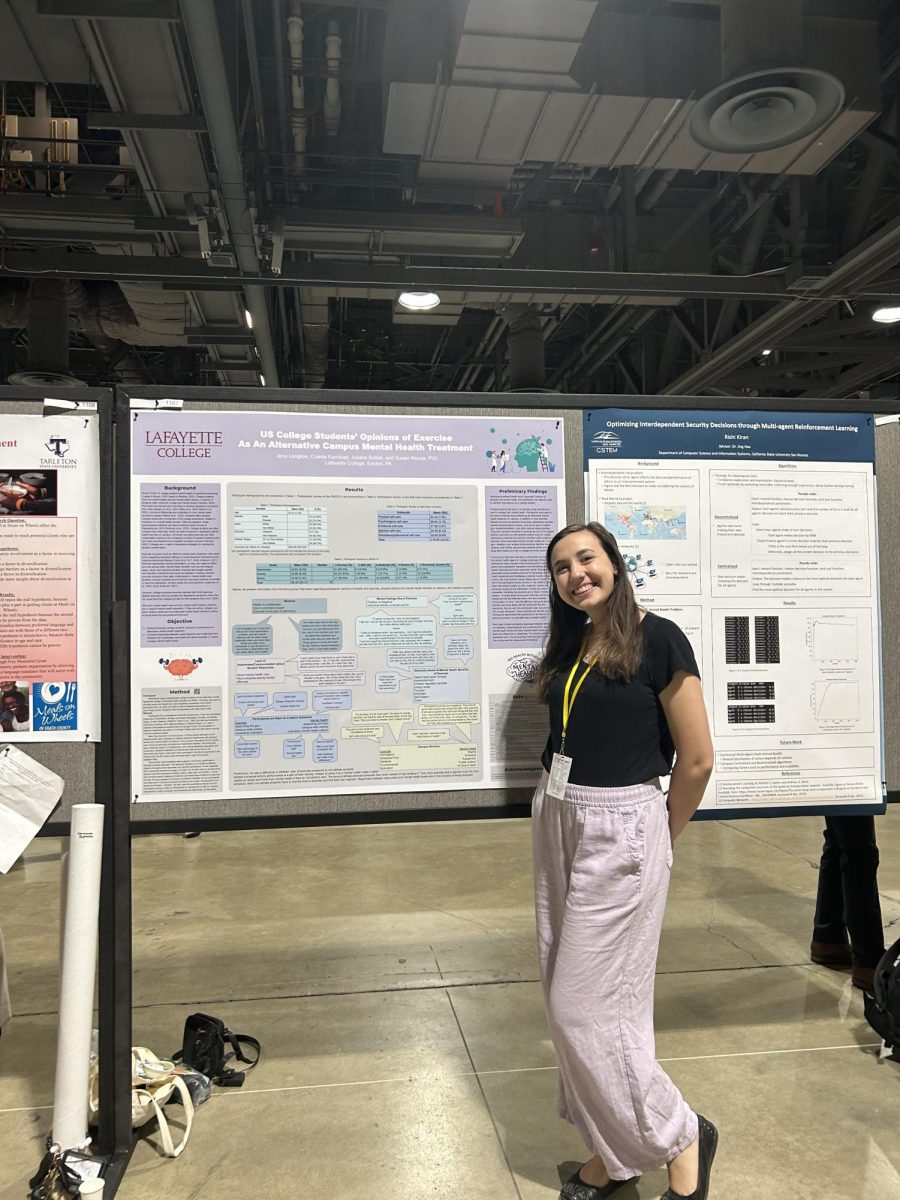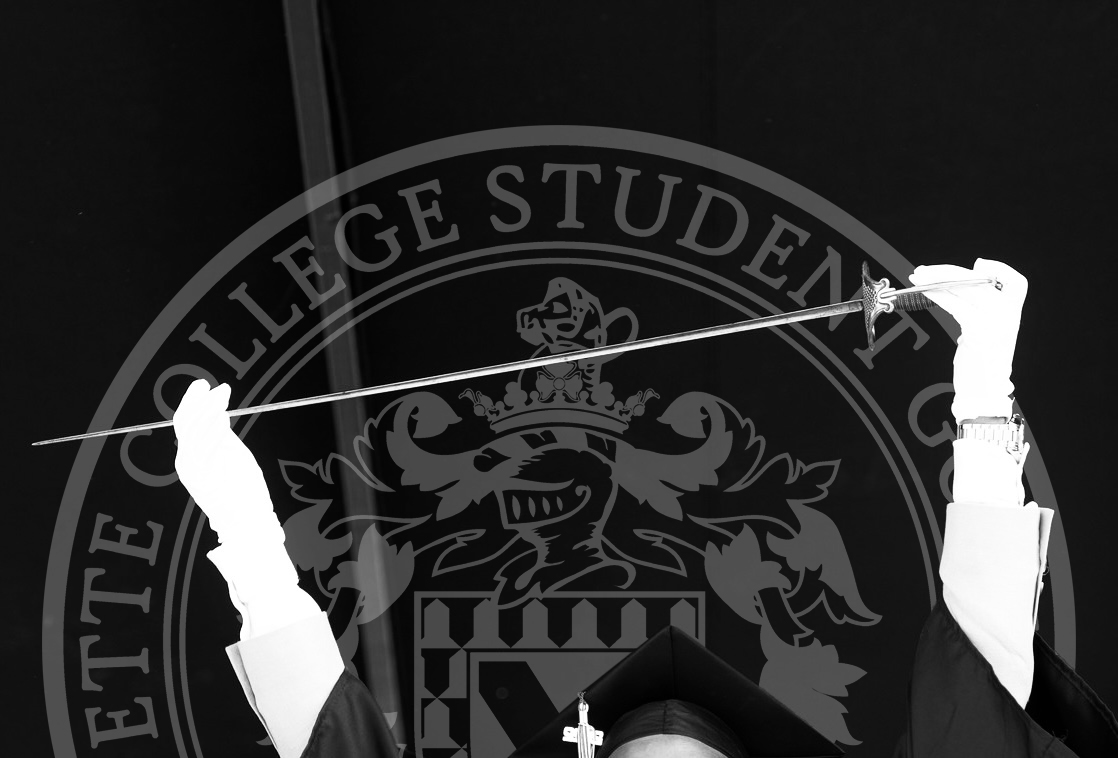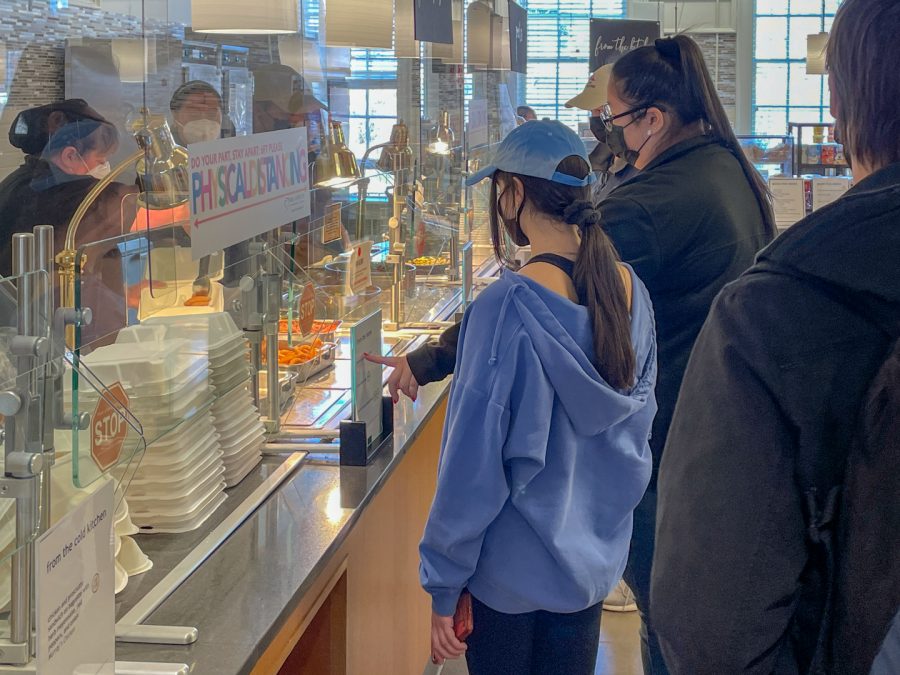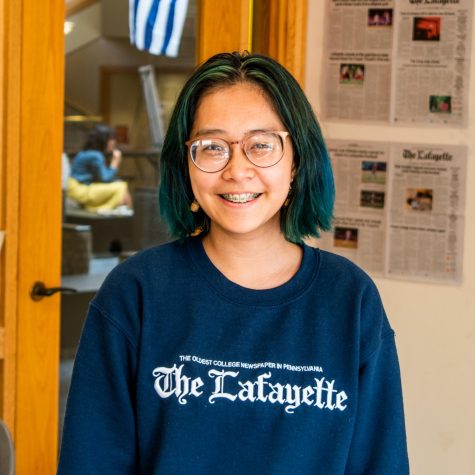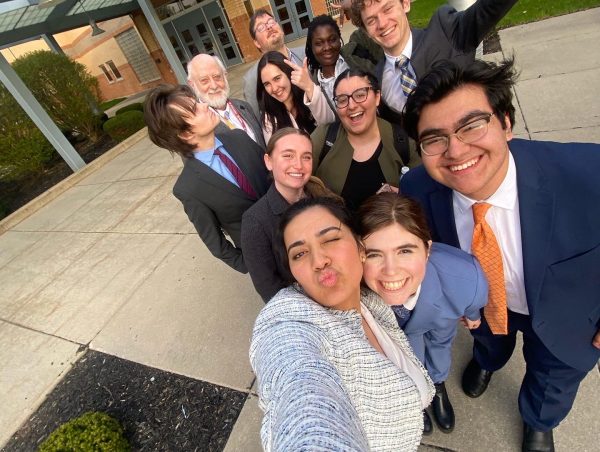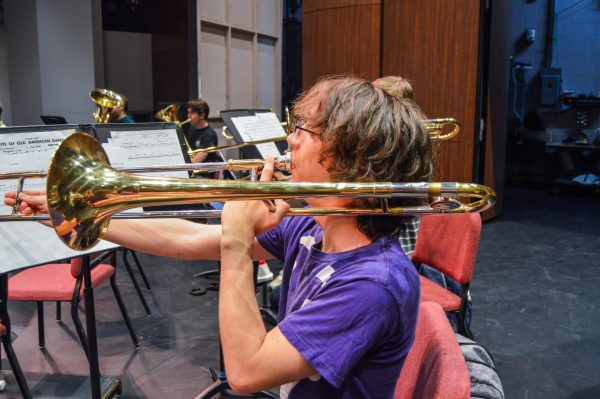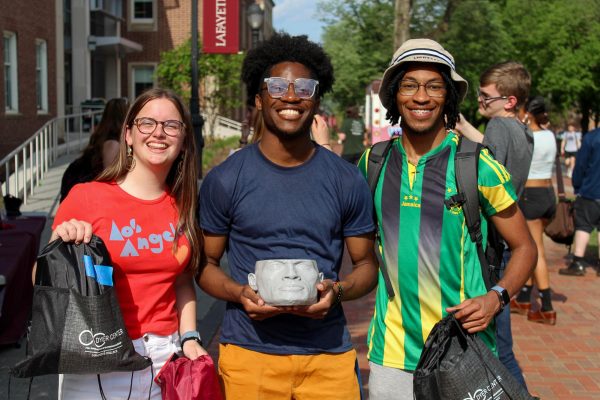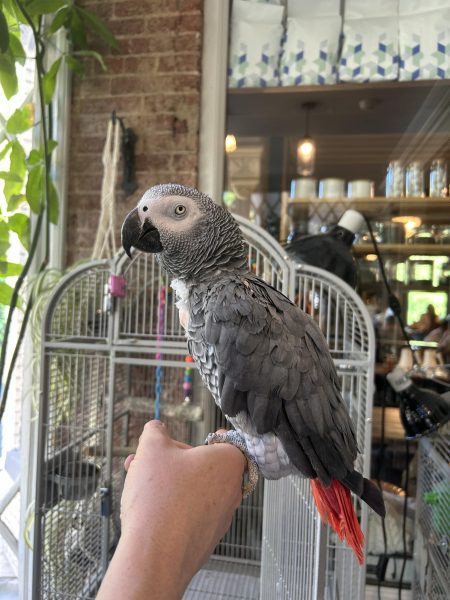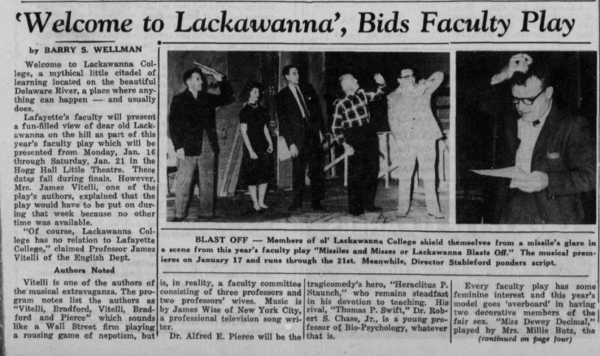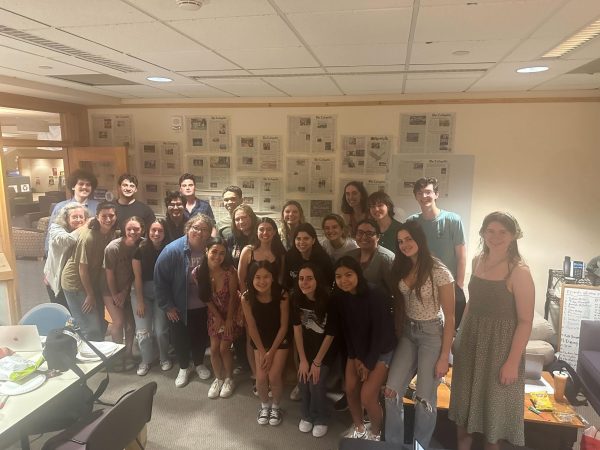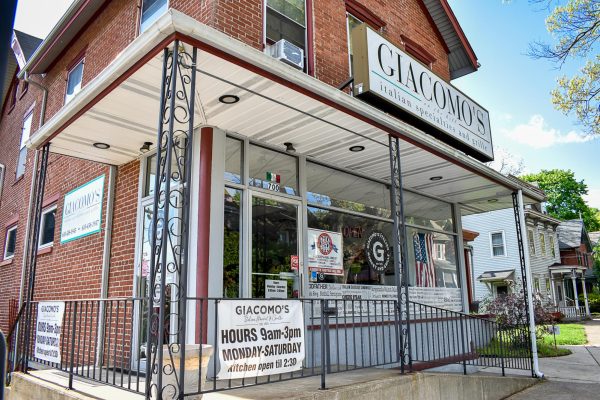How Bon Appétit has changed dining services for the pandemic, and what changes might stick
In order to feed the 2,000 or so students on campus while still keeping everyone safe, Bon Appétit has had to make a number of adaptations to dining services. (Photo by Kwasi Obeng-Dankwa ’23)
March 12, 2021
Craig Becker, the Associate Vice President of Finance & Business Services at Lafayette, keeps two priorities in mind when making decisions about campus dining services during the pandemic.
“Objective one: provide good, quality service. Objective two: be safe,” he said.
As simple as these objectives may sound, feeding the 2,000 or so students who are currently living on campus has not been easy. Becker is one of the many people working together with Bon Appétit, the primary dining and catering operation on campus, to adapt dining services to the pandemic.
“Last semester, we started fully integrating all the systems that we’ve put in place,” said Christopher Brown, general manager at Bon Appétit Lafayette. “We’ve added the dining mobile app, the Plexiglas that was put up, the ability to serve all students in a takeout and to-go fashion [and] the stanchions.”
Most recently, Lafayette has incorporated food trucks into its existing meal swipe system.
“We realized that going for meals one, two, three times a day in the same venues all the time can get repetitive for the students,” said Greg Scofield, the director of Business Services at Lafayette. “We were able to set a schedule of Thursday and Friday nights for the month of March for outside food trucks.”
Scofield explained that because outside food trucks do not have a card reader that accepts the Lafayette meal swipes, they decided to implement a ticket system where students swipe their cards for a ticket that they could then exchange for a meal at a select food truck. The college would then subsidize the difference between the cost of the meal and the meal swipe.
Although the new system caused some confusion among students, Scofield said he was ultimately pleased with student reception to the food trucks.
“We served over 160 meals out of each truck Thursday and Friday night,” Scofield said.
According to Becker, the food trucks were also implemented to encourage social distancing by reducing lines at other venues. However, there is a possibility that the food trucks will remain a regular dining option on campus after the pandemic.
“That’s been a question for years: how do we get the food truck onto campus? Now that we have the ability to actually take meal swipes on the truck, I would venture to guess that we’ll see that more and more,” Brown said.
“I’m not gonna promise it,” Scofield added. “But if it worked this winter, why wouldn’t it work next winter as well?”
Another pandemic-induced adaptation that will likely be staying on campus after this semester is the dining app that students have been using to order food.
“We’ll adapt it accordingly as the next semester comes along, but we’ve fully integrated that dining app into campus,” explained Brown.
The food trucks will likely not be the only expansion in dining options that is implemented this semester.
“We’re probably going to expand further in April as the weather continues to break,” Scofield said. “We’ll have more options on the quad. We’ll be able to do some outdoor grilling, some barbecue. We’re talking to a local pizzeria about coming up and setting up the grill and cooking sandwiches and stuff one night a week.”
Additionally, Becker looks forward to the opening of “The Trolley Stop” diner on campus, which is set to open in April.
Despite this increase in dining options, it is unlikely that venues like Simon’s will reimplement made-to-order meals.
“We more than likely will not see made-to-order options in our dining halls…Unfortunately, that option can’t happen because we’ll hold up the line,” Brown said.
Still, Bon Appétit is looking at other ways that they can add menu options to certain venues.
“We’re looking at each menu internally… Gilbert’s Café is still an extremely small café. We have to meet the guidelines of how many people are allowed to physically work in that building,” said Brown. “The menu won’t grow drastically, but we could see some different options.”
In addition to the food trucks and dining app, another success in adapting dining services to the pandemic has been Bon Appétit’s continued commitment to sustainability.
“We serve everything with 100% recyclable or compostable products. We’ve sourced those products for campus in years past, and we’re just using more of them currently,” said Brown.
According to Brown, Bon Appétit has stopped including single-use cutlery with every meal, instead allowing students to pick up utensils as needed. Additionally, the ECO Café has recently implemented a bagless pickup option.
Although Bon Appétit has been keeping sustainability in mind, safety is still their first priority.
“Sustainability is important to us—but if we had to choose between safety and sustainability, we opt to lean towards safety,” Brown said.
Despite all these successes, adapting dining services to the pandemic has also presented a unique set of challenges.
“Not only did we reopen in a pandemic with almost a full campus of students back, but we had to put in a whole new dining app and implement delivery across campus,” Brown explained.
Maintaining dining services during the pandemic has also been more expensive.
“It’s costing more, and it’s just a sheer fact of the pandemic,” said Brown. “Food prices are up. Local food is costing more.”
Additionally, Bon Appétit has had to spend more money on cleaning supplies, along with protective equipment and weekly COVID-19 tests for their staff.
“Frankly, the dining staff is the most exposed staff to the students on campus,” Scofield explained.
Another reason for the increased spending is that, despite the decrease in students living on campus, Lafayette hasn’t been able to reduce the hours of dining venues.
“In a normal situation, if we had less students on campus, we probably would reduce hours, reduce venues,” Becker said. “Because of the need to enable social distancing, we’ve kept all venues open.”
